O N D E C A Y
Informing Time Through Material Transformations
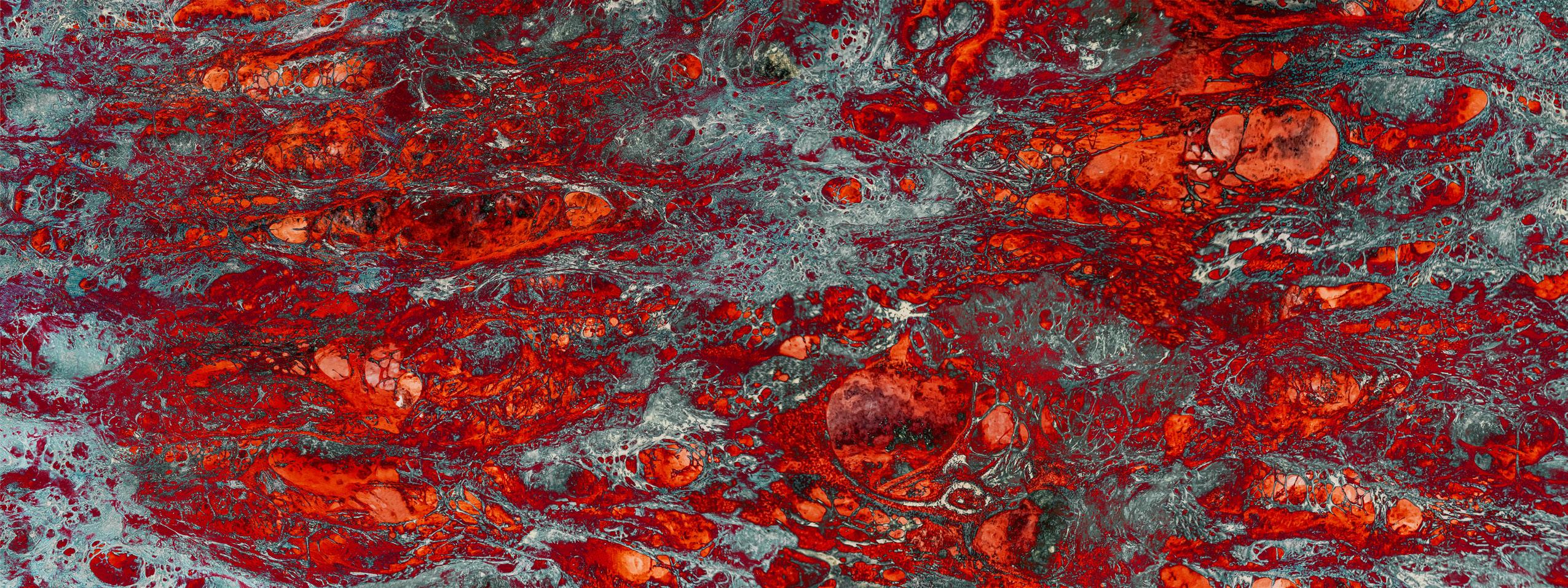
On Decay: Informing Time Through Material Transformations Valeria Otero López Thesis Advisors: Jean-François Bédard Britt Eversole Julie Larsen Syracuse University School of Architecture Fall 2022
01 ABSTRACT
Our natural and designed environments undergo a series of dynamic cycles in which there are endless processes of transformation in everything that surrounds us.
During the semester, I manipulated various commonly used materials in the built environment. These went through a series of mutations, either by physical or chemical transformations, ultimately pushing for deterioration and decay in each intervention. While experimenting with these, I was exposed to artists whose work reflects their spatial and environmental understanding. They showed how design can be used to communicate, provoking others to think, to wonder, and to create more of these works that express notions of what surrounds us. My work reflects on the meaning of time and space in relation to erosion, and the ways in which matter is capable of change, evolution, and imperfection.
02 CONTEXT (ART & DESIGN)
ALBERTO BURRRI ROBERT SMITHSON DANIEL ARSHAM LUCIO FONTANA URS FISCHER PETER ZUMTHOR ANNE HOLTROP OLAFUR ELIASSON NIR HOD CARLO SCARPADANNIEL ARSHAM
American Artist (1980 - present). In his artwork, he explores the themes of architecture, history, and the process by which time passes. His works include the use of conventional and unconventional materials, such as amethyst, volcanic ash, calcite, glass, pyrite, and eroded concrete, creating a sense of decay and deterioration. He illustrates futuristic and dystopian aesthetics through familiar objects, conceptualizing the past, the present, and the future.
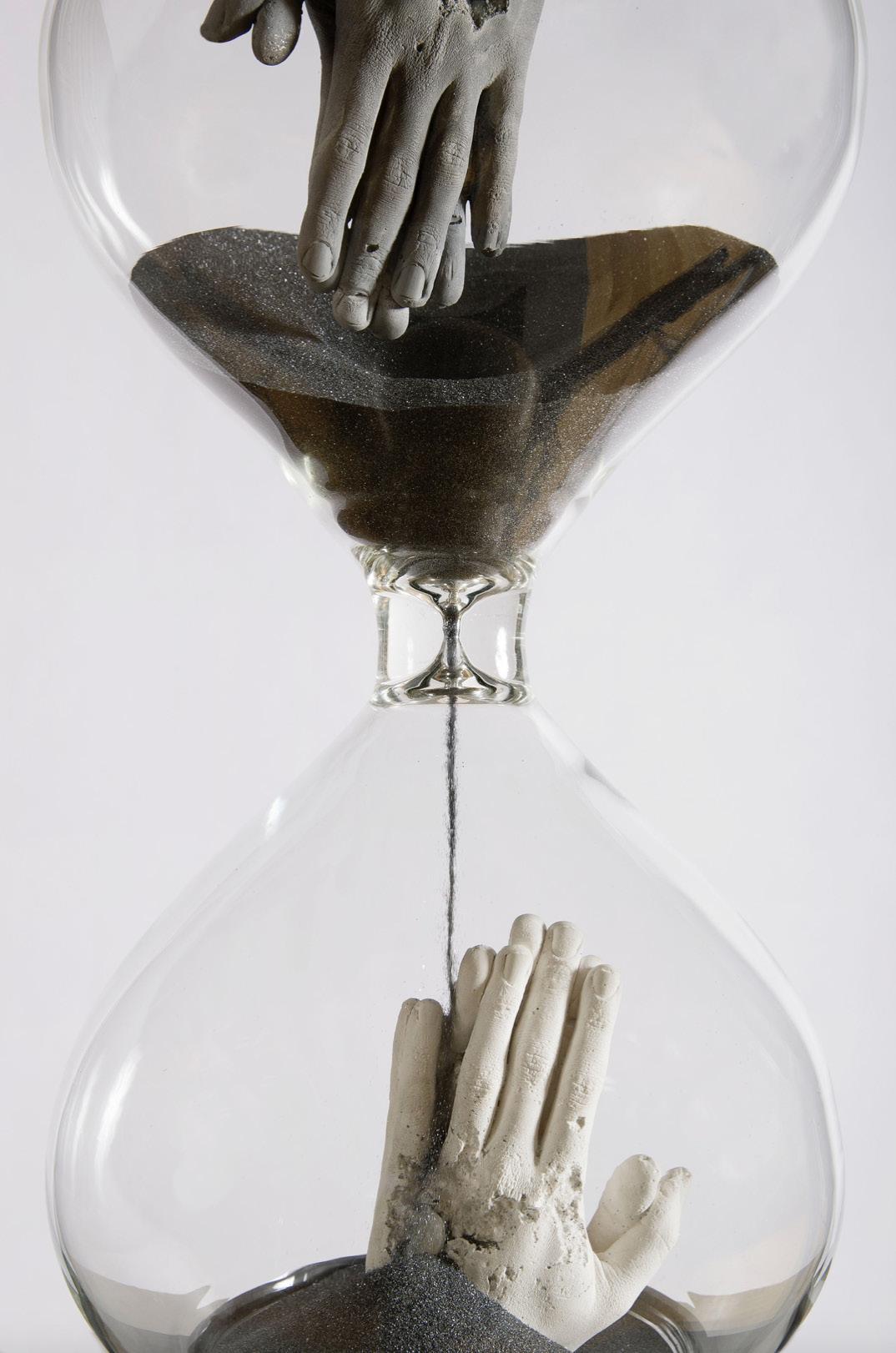
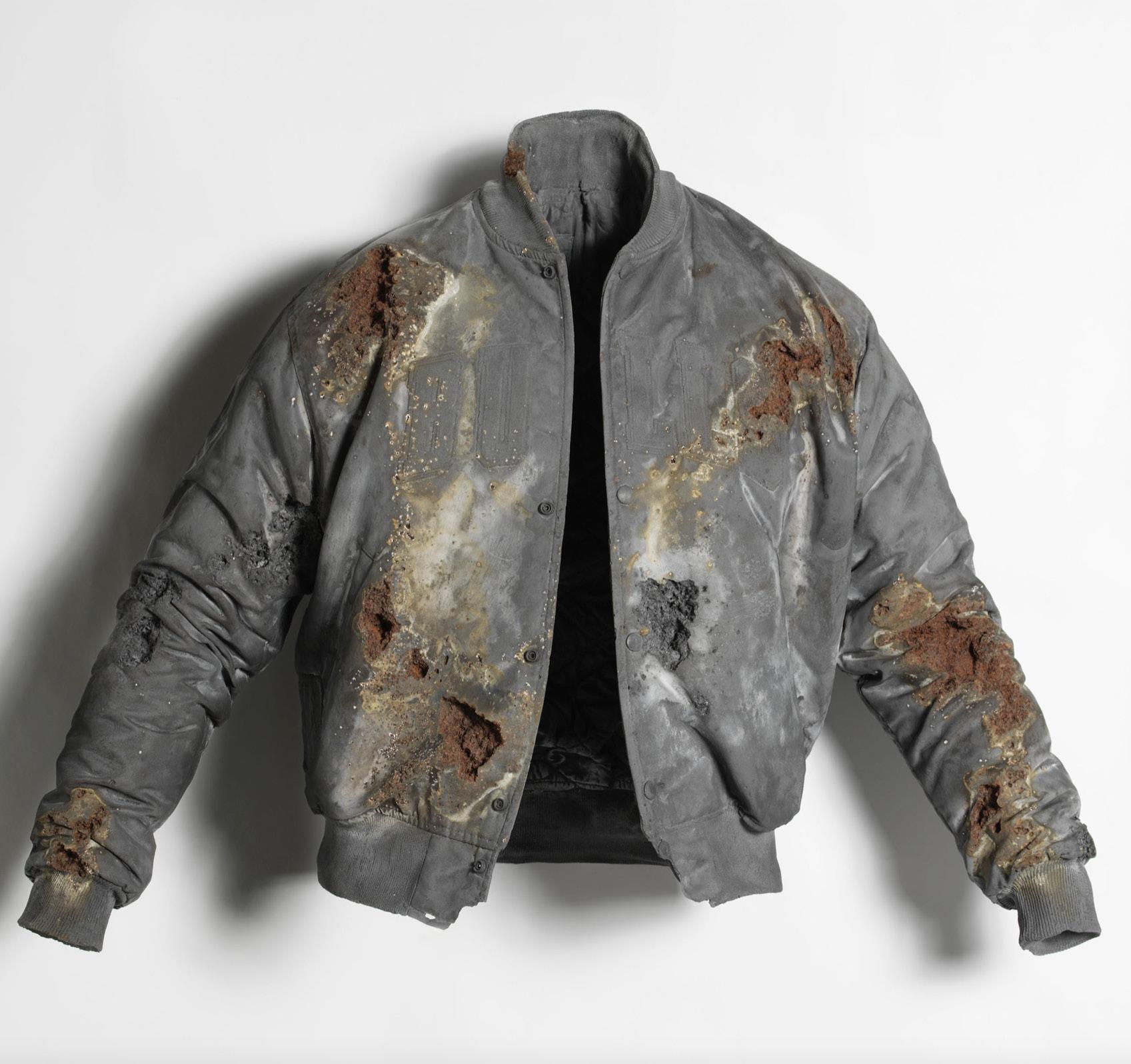
ALBERTO BURRI
Italian artist (1915 - 1995). As a prisoner of war during World War II, his art expresses the trauma and suffering he experienced. He is known for the use of unconventional materials in his artwork, including his series in which he eradicates plastic. Although he is applying heat to the material, it is the plastic that determines how and what organic form to take. He conceptualizes that the artist doesn’t have full power over what will happen to the piece.
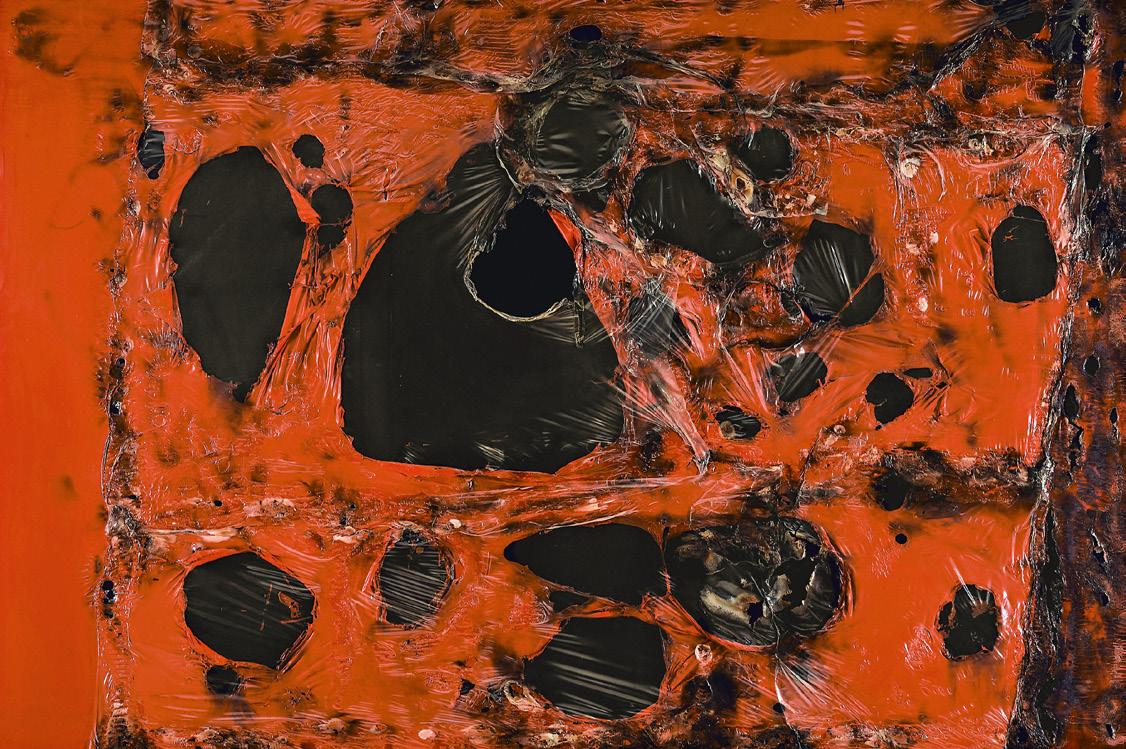

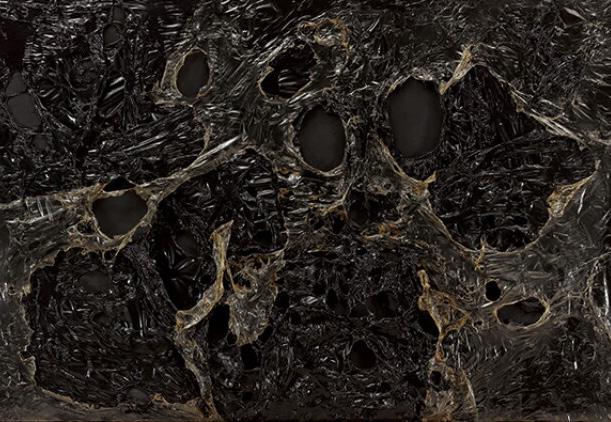 Grande Bianco Plastica 1964
Rosso Plastica M 2 1962 Nero Plastica L.A 1963
Grande Bianco Plastica 1964
Rosso Plastica M 2 1962 Nero Plastica L.A 1963
OLAFUR ELIASSON
Danish-Icelandic artist (1967 - present). Known for incoorporating elements of nature and the environment in his work, drawing attention to the impact of climate change. In both The Glacier Seres and Ice Watch, he depicts ice formations in various states of change and transformation. He describes these as “visual alarm clock”, hoping that individuals take action on what’s happening to our planet.

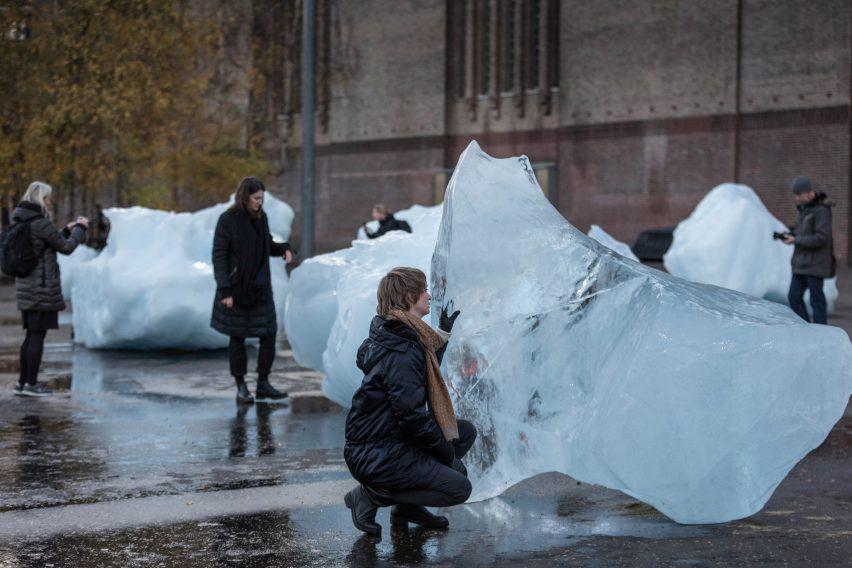 The Glacier Series 1999
Ice Watch (London) 2018
The Glacier Series 1999
Ice Watch (London) 2018
URS FISCHER
Swiss Artist (1973 - present). His work explores themes of transformation of reality, as he questions how our perceptions of the world can be informed through our cultural context. He uses familiar materials and forms but presentes them in unconventional ways. He oftten uses wax in his pieces, inviting one to think about the mutability of form in our surroundings. “YOU” is concerned with the relationship between the individual’s identity and the spaces they inhabit.


LUCIO FONTANA
Italian artist (1899 - 1968). He challenged the role of conventional artists. His Ceramica Spaziale series used traditional ceramic techniques while incorporating elements of abstraction, expressing his theoretical approach to inform about space. The still sculptures reflect ideas of movement and dynamism, creating a sense of spatial complexity while rejecting the solidity of the material.
Ceramica Spaziale 1949
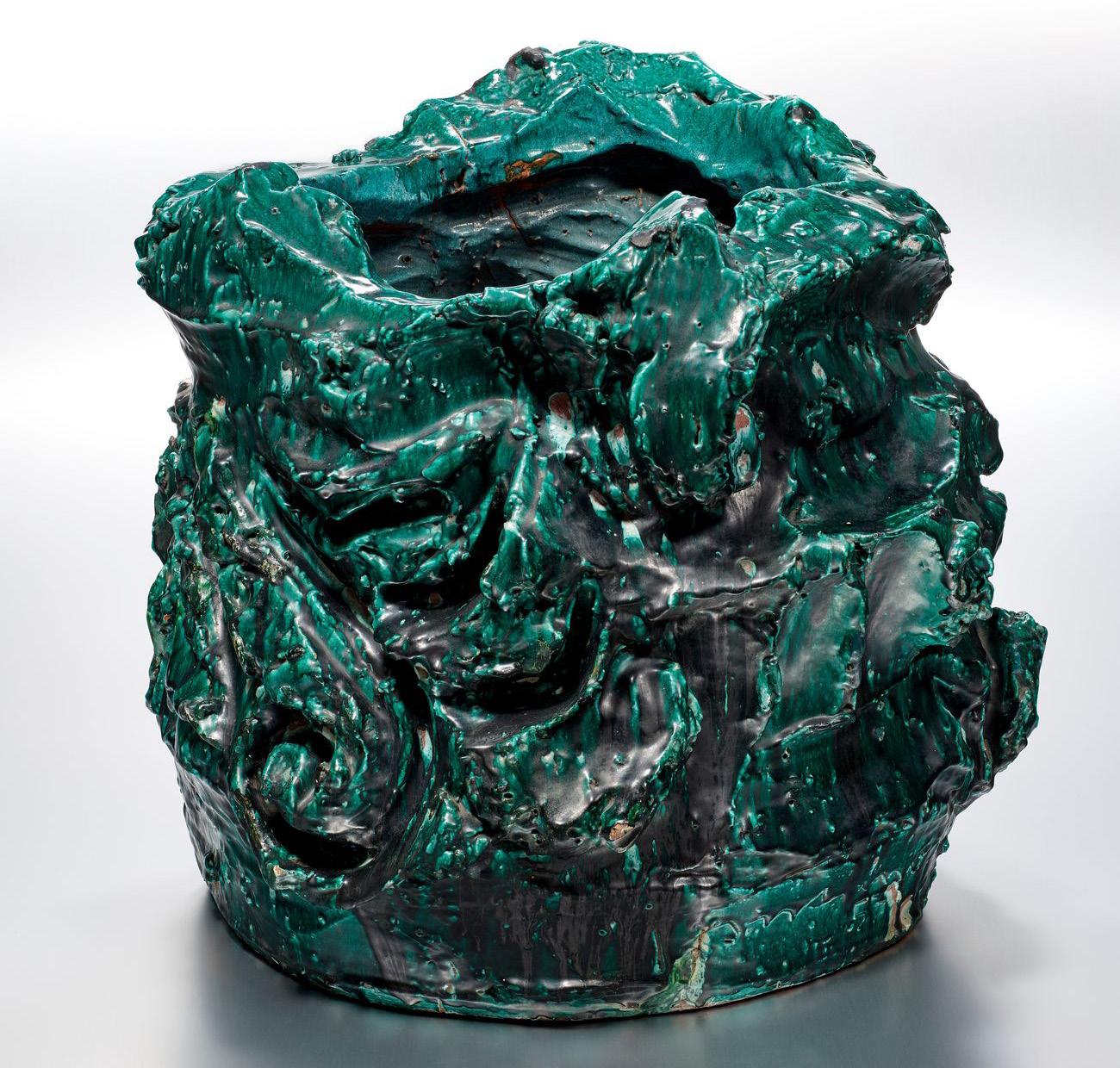
 Ceramica Spaziale 1953
Ceramica Spaziale 1953
NIR HOD
Israeli Artist (1970 - present). Interested in the concept of presence and time. He conceptualizes the ideas of death and loss, invitig people to reflect on how these affect our relationships with others and our sense of identity. His melancholic work deals with how memory shapes our understanding of the world, reenforcing the idea of life being impermanent.
Once Everything Was Much Better Even The Future 2014
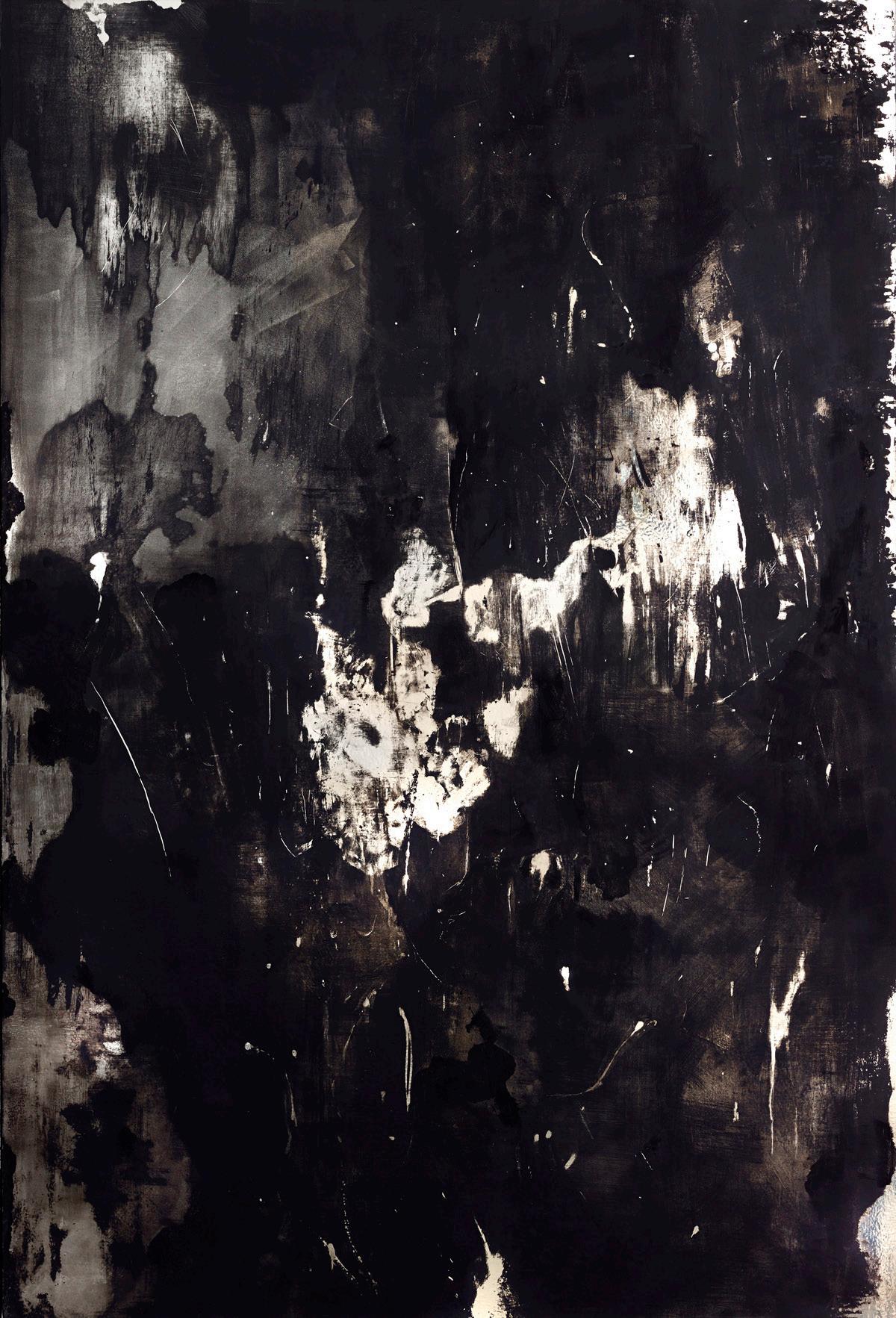

ANNE HOLTROP
Dutch architect (1977 - present). His work focuses on material, structure, and form studies. He explores ways in which architecture can create a sense of place and connection to the environment. His studio’s “Material Gestures and Found Forms” studies express interest in materials that are not often related to the architecture culture, reexamining and reinterpreting these until they can be then seen as architecture form and structure. Overall, he encourages viewers to consider ways in which architecture and nature interact, creating a sense of place and connection to the environment.
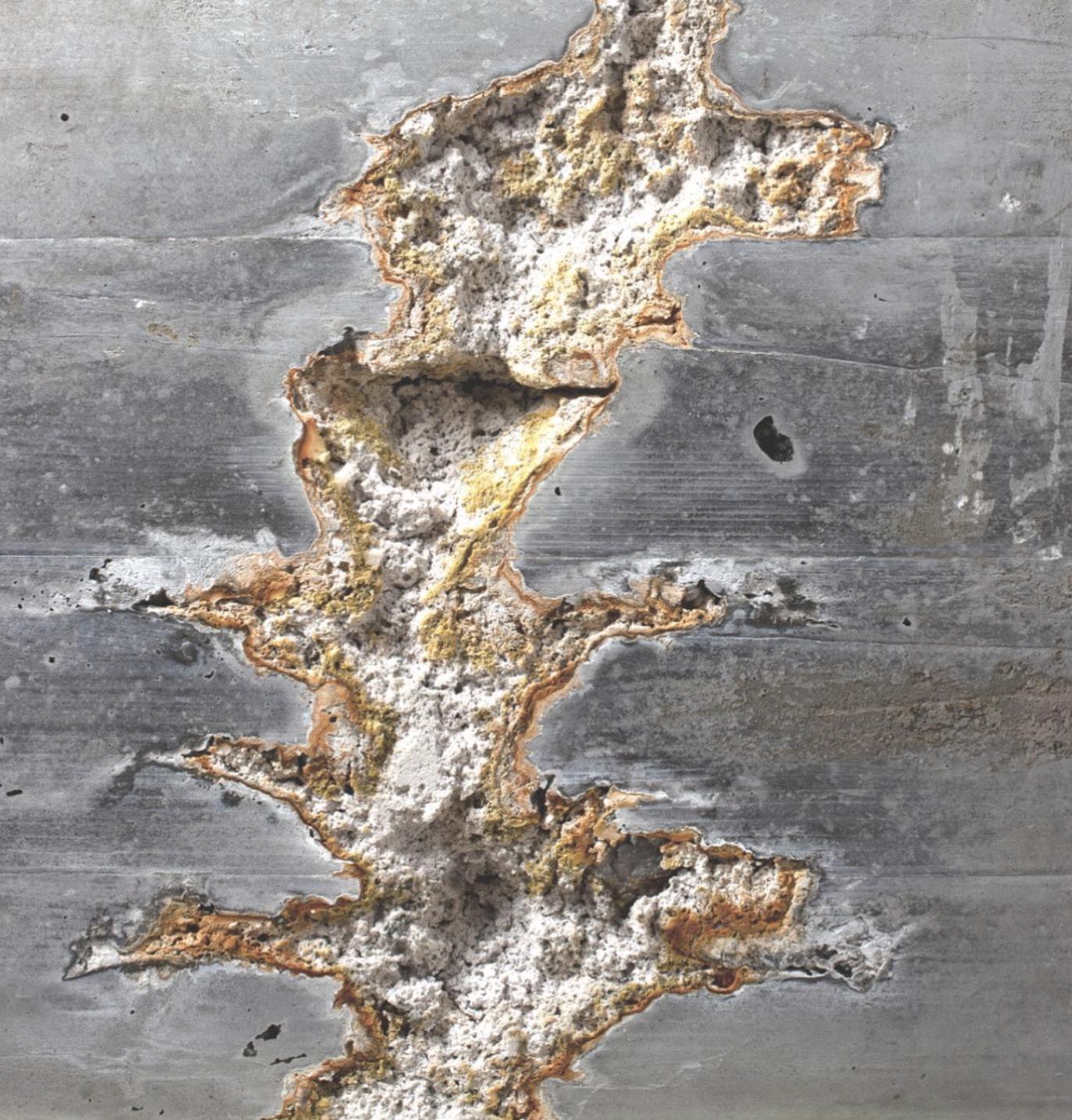

CARLO SCARPA
Italian architect (1906 - 1978). His work is best known for his attention to detail, while often using materials such as stone, glass, and concrete. He draws attention to the effects of weathering and time of these materials, and what impact the appearance of these could add to the character of buildings. He would use special chemical solutions on the materials, enhancing the effects of weathering over time in his designs.
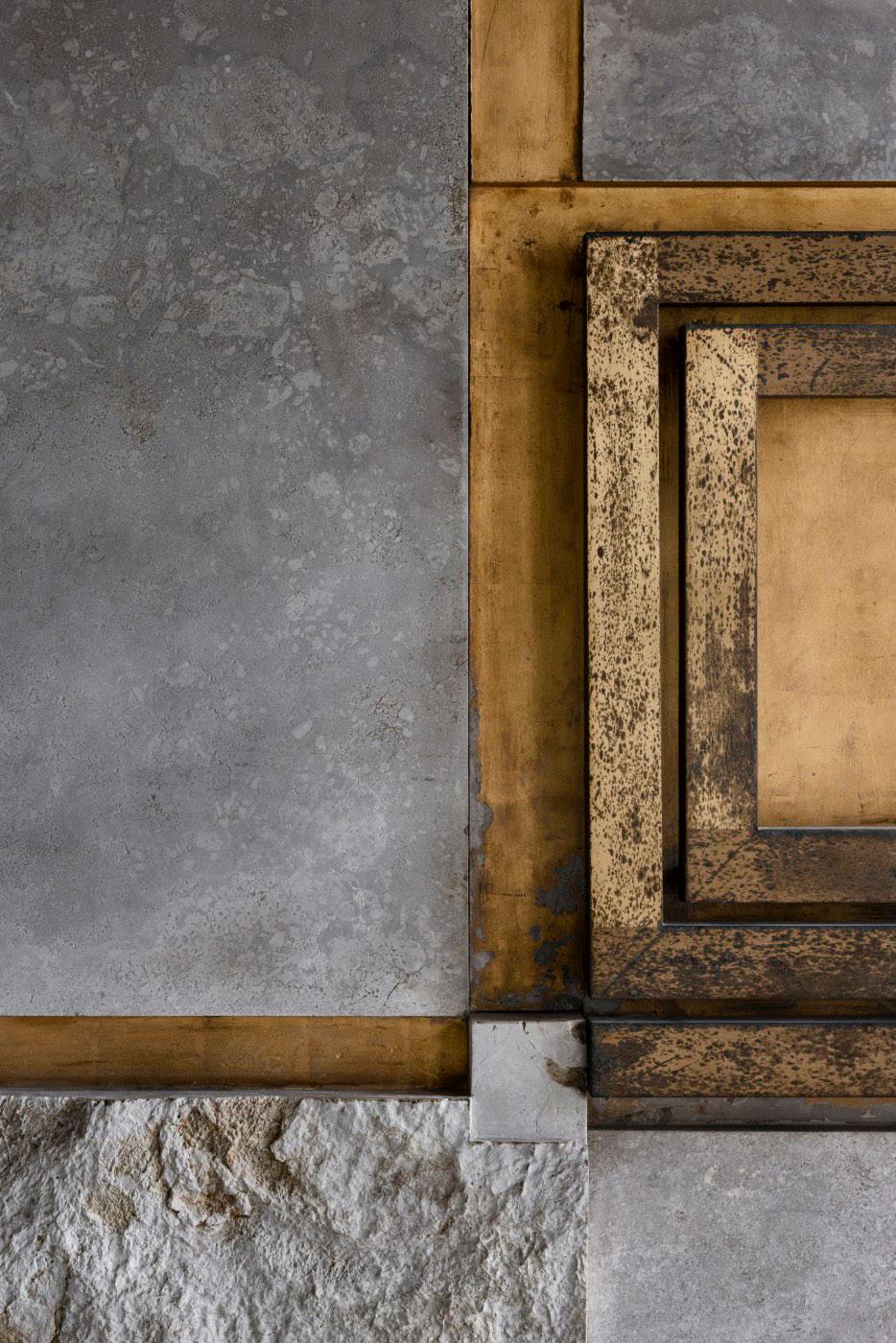
 Olivetti Showroom 1958
Palazzo Querini Stampalia 1961
Olivetti Showroom 1958
Palazzo Querini Stampalia 1961
ROBERT SMITHSON
American Artist (1938 - 1973). He is know for his development of conceptual land art by rearranging enormous quantities of dirt, rock, and other materials found within the landscape. Influenced by environmentalism, he explores the themes of time and entropy. He believes that art should engage with the natural world in a meaningful way. The use of industrial materials in his work, such as glue, critiques every day used materials within modern art, while still achieving organic forms.
Glue Pour 1969

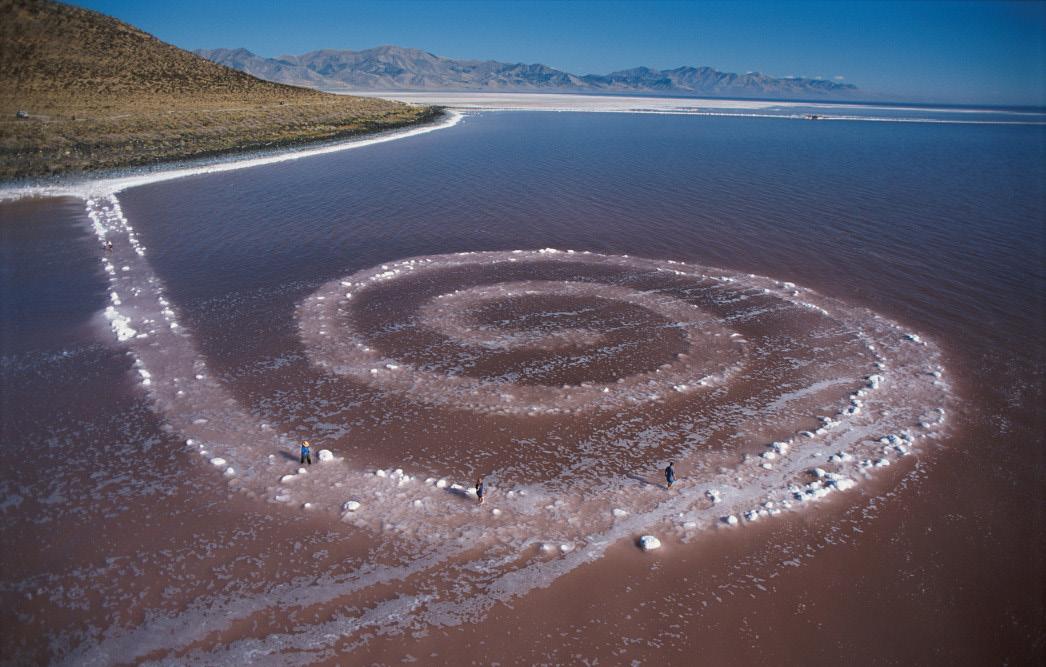
Partially Buried Woodshed 1970
 Spiral Jetty 1970
Spiral Jetty 1970
PETER ZUMTHOR
Swiss architect (1943 - present). He is known for his contemplative design approach. The Bruder Klaus Field Chapel, designed by him, is a concrete structure with oak tree trunks supporting its roof. The oak trees were cut down, burned in a special kiln, and then used as exterior cladding for the chapel, giving it a dark, organic appearance that blends with the environment. The charred wood is resistant to decay and insects, in contrast to the wood at its original state.
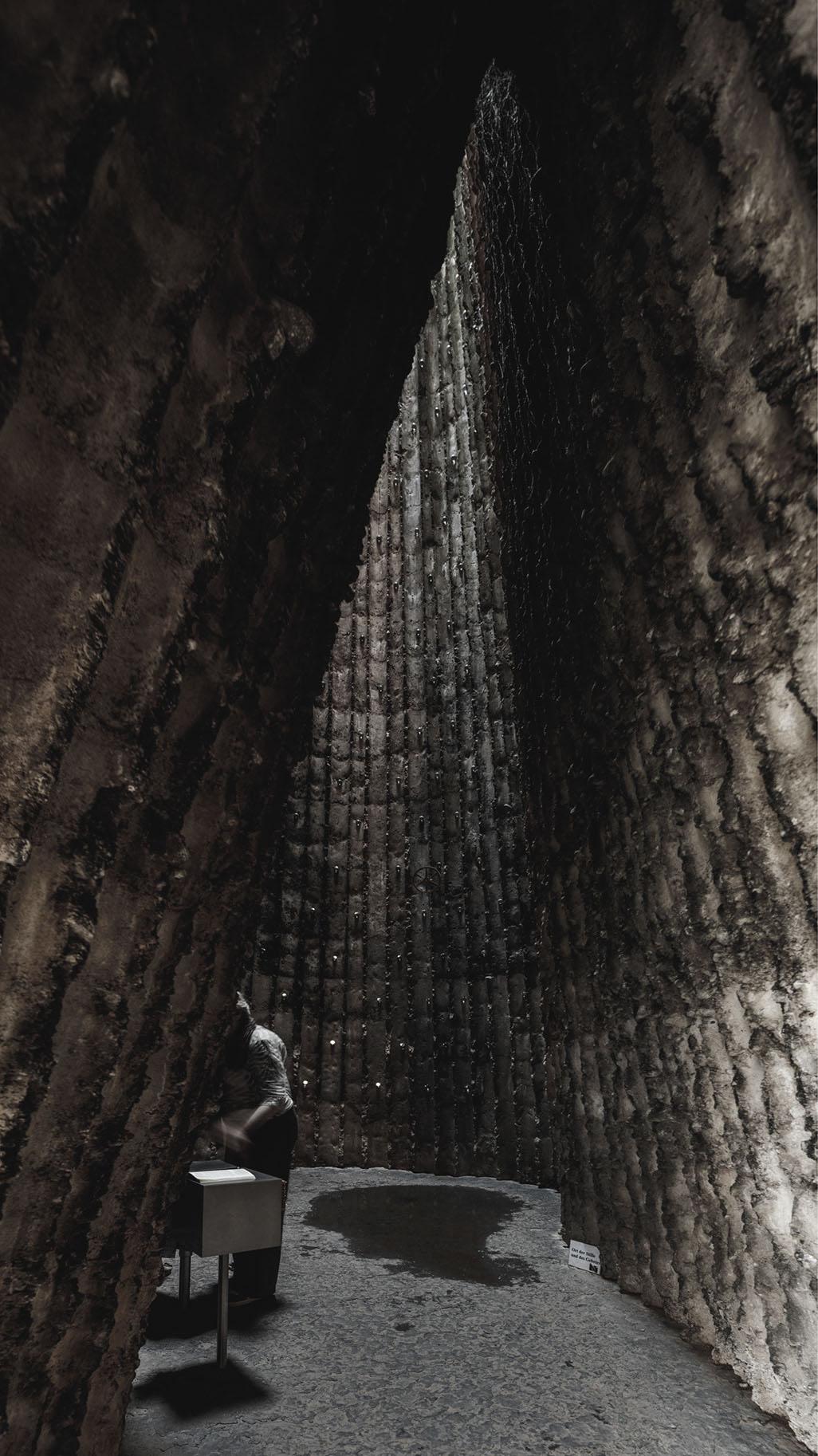 Bruder Klaus Field Chapel 2007
Bruder Klaus Field Chapel 2007
03 CONTEXT (TEXTS)
GIULIANA BRUNO MANUEL DELANDA JEFFREY MAITLAND FARSHID MOUSAVI CAITLIN DESILVEY ADOLF HILDEBRAND MOHSEN MOSTAFAVI & DAVID LEATHERBAROW STEPHEN CAIRNS & JANE M. JACOBS JOHN ZEISEL SALLY STONEGIULIANA BRUNO
“This is the perfect cloth to suit your soul. It shows its inner folds. It contains the force of spirit exerted on the architecture of your body, molding its inner surfaces. To fold, after all, means to envelop, embrace, and hug. It is the intensity you covet. ‘Pleats, please’.”
“This kind of architecture, a transitory habitation, is indeed transformative”
Bruno on “Pleats of Matter, Folds of the Soul”
Interested in the relationship between one and space, she extends on the idea that as we put ourselves in an environment, we absorb these, and these absorb us. The environment that surrounds us affects how we interact with what’s present. Space is part of us and we are part of space. To occupy a space is to wear it — building is not only worn; it wears out.
GiulianaSTEPHEN CAIRNS & JANE M. JACOBS
“Biological and ecological concepts of decay are full of activity, exchange, acquisition and redistribution. Decay is as life-giving as it is life-taking.”
A Perverse View of Architecture”
Both elaborate on how decay is often thought of negative as it is tied to the idea of a destructive process. However, decay is part of an inevitable life cycle in life and in architecture, claiming that change and transformations should be celebrated and embraced rather than “hidden” or renovated. They contemplate architecture for its original state and how this one ages as time goes by, rethinking how one values building.
Stephen Cairns and Jane M. Jacobs on “Buildings Must Die:MANUEL DELANDA
“One way of describing the situation is to say that the spontaneous changes that animate matter from within always take place one dimension lower than the space formed by the parameters triggering the changes.”
“This means that adding a new part involves changing the positions of many other parts. In a cell, parts are more flexible and the overall topological connectivity of the assemblage is more important than its metric properties, so that a new component appearing by random mutation can be more easily accommodated.”
“A capacity to affect always goes with a capacity to be affected.”
Manuel DeLanda on “Matter, Matters”
Evokes thought on the different general understandings on matter. Mater is capable of change. Its imperfections are important at the moment of endurance. It can evolve. It’s able to sense change to prevent material failure. Some materials are subject to change thanks to the specific environment around them. Having this in mind, one can get endless opportunities with what matter can do.
CAITLIN DESILVEY
“Intervention and treatment aim to protect things from outright destruction or neglect as well as more indirect processes of erosion, weathering, decay, and decomposition. But what happens if we choose not to intervene? Can we uncouple the work of memory from the burden of material stasis? What possibilities emerge when change is embraced rather than resisted?”
“Decay has been allowed to run its course out of an appreciation for its aesthetic effects.”
“Decay occurs when a complex of biological, chemical, and physical processes — each driven by specific agents and elements — combines to break down the integrity of a substance and to make its components available for enrollment in other projects.”
“In relation to built structures and artifacts, decay is usually framed either through a “logic of loss” or a logic of renewal and rebirth.”
Caitlin DeSilvey on “Curated Decay: Heritage Beyond Saving”
Discusses the benefits of architecture that’s in a state of deterioration. One needs to understand the effects of preservation and how these affect the cultural and social aspects of a given environment. Rather than renovating structures in order to keep these as “perfect” as possible, letting these decay is sometimes a better approach to expose the true meaning of a given artifact.
ADOLF HILDEBRAND
“The more an artist nurtures the idea of space in the appearance, the stronger the experience one will have.”
“The more coherent and recognizable the surface effect of the object’s image is, the more coherent is the idea of depth [...] Figues form a spatial value in conjunction to the background.”
Extends on the formal elements of art and how these can be perceived. For better interpretation of the “bigger image”, one should be looking at the different elements in context. One’s understanding of what’s presented will vary depending on one’s abulity to comprehend the separate pieces as a whole, which can be differently perceived by changing one’s vantage point.
Adolf Hildebrand on “The Problem of Form in the Fine Arts”JEFFREY MAITLAND
“Experience
“Since
are fundamentally in time and of time, we are at this very moment lapsing and not lapsing, passing and not passing, aging and not aging.”
Jeffrey Maitland on “Spacious Body: Explorations in Somatic Ontology”
Overall, he writes about the bodily perceptions of reality and how we are defined by the limitations of our physical form. We are also affected by the notion and complexity of time, while being in a constant state of change. He argues that we need to find a new type of language that suits “the nature of life / the human body self / transformation.”
“We know what we are made out of, but we do not know who we are.”
seeks a language in which to show itself.”
we
“In the process of subtracting the ‘finish’ of a construction, weathering adds the ‘finish’ of the environment.”
“The use of the same technologies throughout the world does not always take the uniqueness of places into account.”
“Greater thickness usually results in longer durability, the latter being proportioned to the former. Erosion of a surface through weathering exposes newer surfaces of the same material in its depth, at once the erasure of one surface and the revelation of another.”
“In the time afte construction, buildings take on the qualities of the place wherein they sited, their colors and surface textures being modified by and in turn modifying those of the surrounding landscape.”
“Weathering marks the passage of time [...] Time’s passage in architecture includes a building’s inception, construction, and inhabitation.”
on “On Weathering: The Life of Buildings in Time”
Both write on how the concept of time and weathering affects what’s built while providing case studies (with images) showing the effects of such. As time passes, structures and materials decay due to environmental factors. They argue how embracing the natural changes can then help develop a new character of a building, even enhancing its intended use as a result. Because of this, it is important to design knowing how materials will respond to natural forces, and that these will be able to resist and adapt over time.
MOHSEN MOSTAFAVI & DAVID LEATHERBARROW Mohsen Mostafavi & David LeatherbarrowFARSHID MOUSSAVI
“Physical form must be preceded by a fundamental principle or cause.”
“The function of each built form consists in a transversal process in which the production of forms and the performance of forms are combined.”
“A distinction needs to be drawn between the New and the Novel [...] The New relies on an external, autonomous force to bring about an abrupt and complete change in a particular cultural sphere, discarding all existing forms [...] The Novel, by contrast, is the product of evolution rather than revolution - the result of one existing form combining with another to become a different form that meets a specific purpose, a cause.”
Farshid Moussavi on “The Function of Form”
Concerned about the concepts that have molded our notion of the built environment, she writes about the relationship between function and form, and how in our century, rapid global changes and the increasing complexity of cities have affected how one perceives the relationships between these. Form is ultimately an important factor when determining how one experiences and uses a building.
SALLY STONE
“The already built provides a direct link with the past; it is a connection with the very building bricks of our society.”
“Consequently buildings, structures and situations that are reused represent both the culture that originally constructed the building and also the society that remodeled it.”
“Spatial patterns are primary means of communication and habits are formed by the manner in which the building is inhabited, that is, we organize our lives around the design of our environment.”
She reflects on the benefits of the concept of adaptive reuse, while also considering its challenges. Through this approach, for example, one can enrich the history of a given place/building, enhancing cultural identity. It is also sustainably beneficial to the environment, as it reduces the amount of waste.
Sally Stone on “UnDoing Buildings: Adaptive Reuse and Cultural Memory”JOHN ZEISEL
Expresses concern about public spaces and how these are taken over by people, questioning if these are truly public. Claims that it is important to know who you’re designig for and understand their needs. One also needs to understand programing for people to find its best use.
“Physical environment relates to people.”
“How individuals manifest personal identity within physical environments designed for large groups.”John Zeisel on “Social Science Frontiers; Occasional Publications Reviewing New Fields for Social Science Development - Sociology and Architectural Design”
04 BLUE FOAM + ACETONE
In the following study models, acetone acts as a destructive and disintegrative element in the chemical reaction process.
While working on these artifacts, I started conceptualizing ideas of time, gravity, and erosion.
For my first iteration, I placed each layer of foam horizontally and selectively poured acetone on it to create the craters. As a result, depending on how much acetone and how fast or slow I would pour it, it would affect the way in which the material would react. When pouring small amounts of acetone at a slow rate, the material would become crisp and fragile, while when pouring in larger quantities at a faster rate, the material would rapidly condense and harden as the air particles would evaporate.
For my second iteration, I placed the foam vertically and let the acetone drip across the material. As the top part would start to harden, the acetone would keep sliding freely across it reaching the lower parts of the foam. Rather than affecting the top layer of the material to create a ripple effect on the surface, which was what I initially predicted, the acetone instead perforated the condensed material, moving through the existing pores and ultimately exaggerating them as a result.
Once the chemical reactions were done, the artifacts kept decaying as one would move them around, manifesting the concept of “wearing out” in our environment at a human scale.

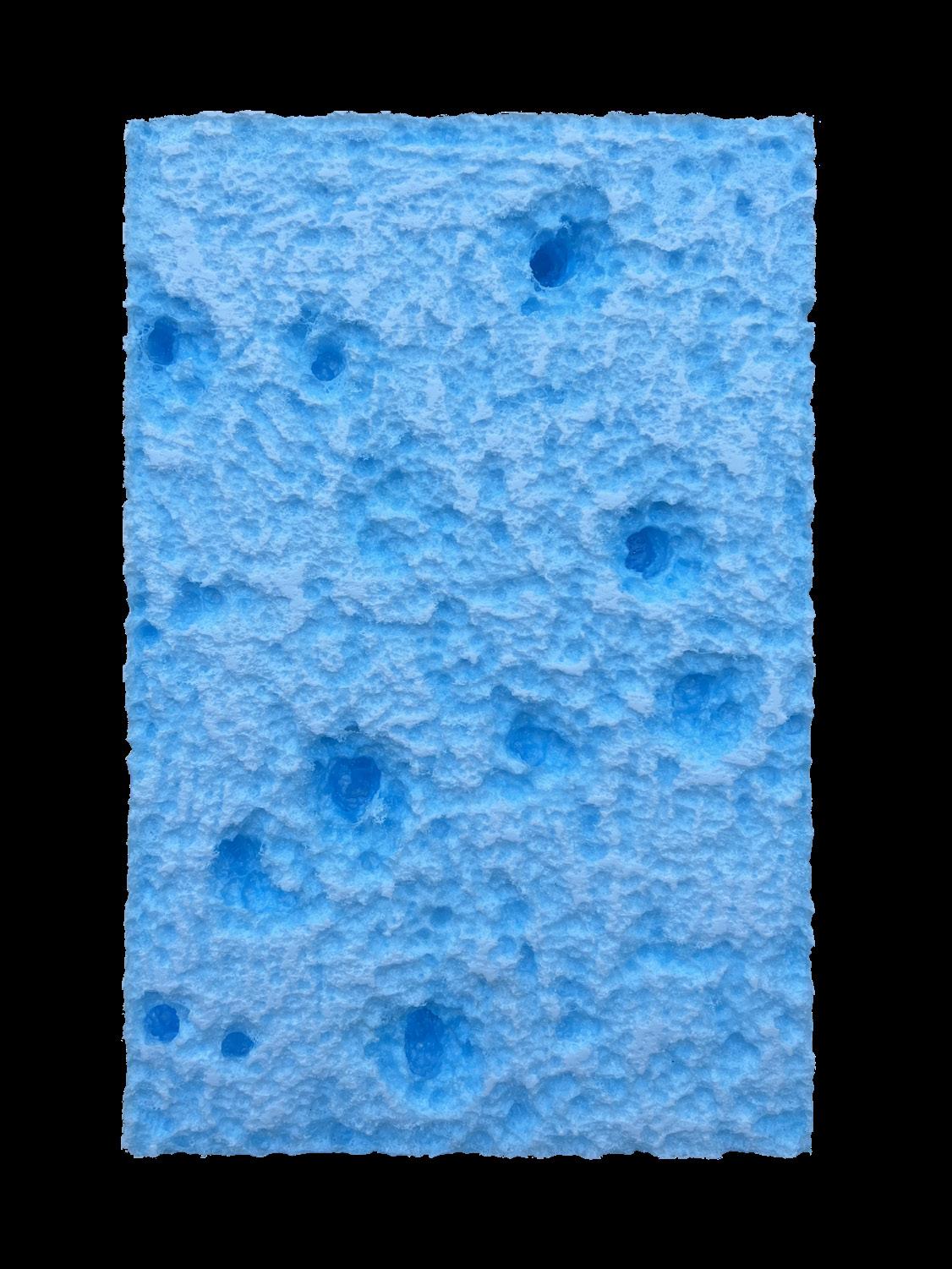



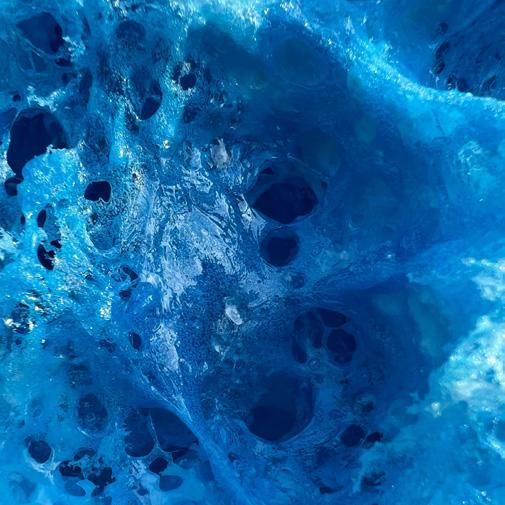














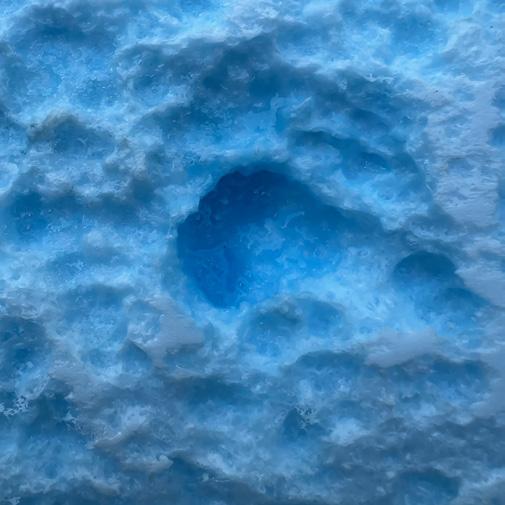
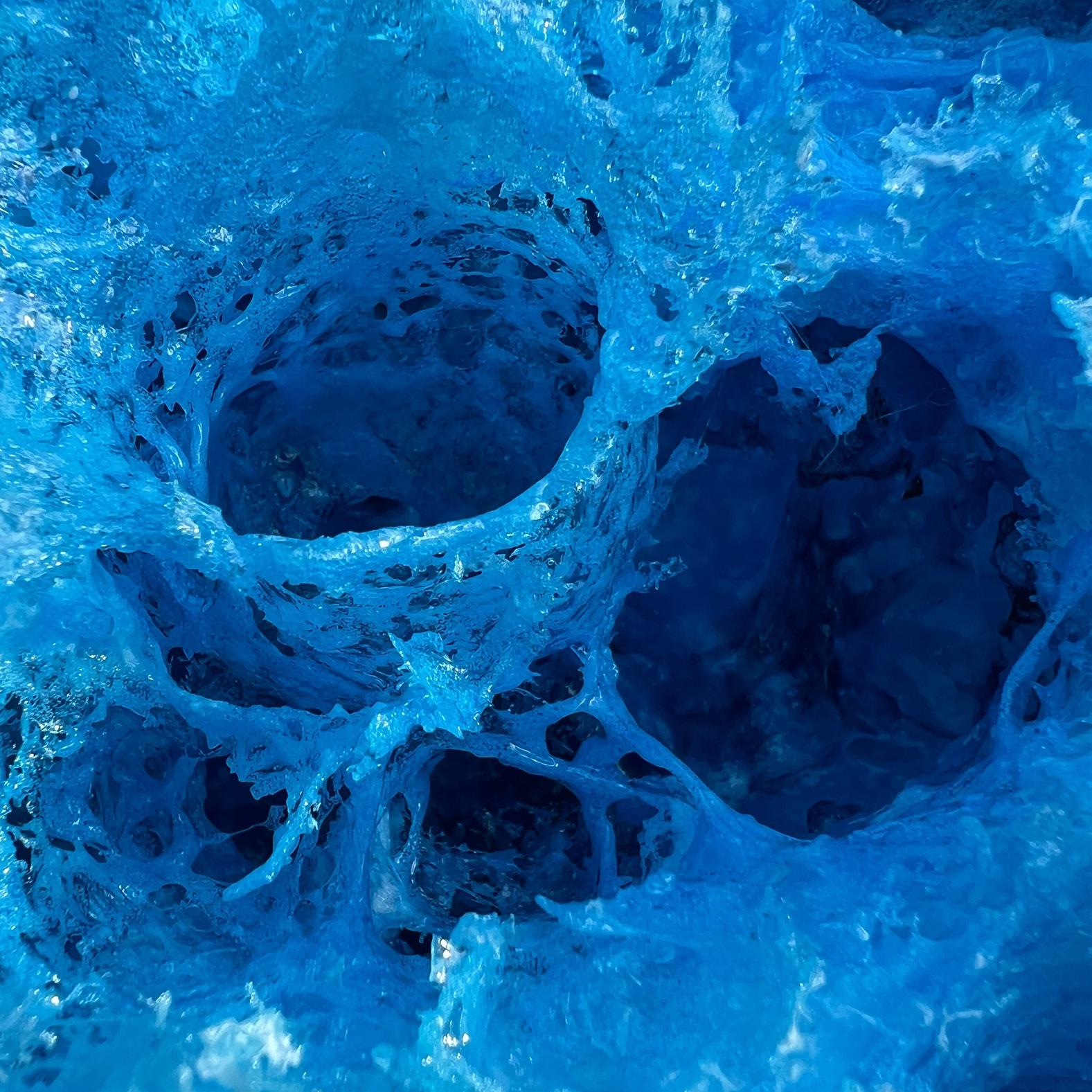

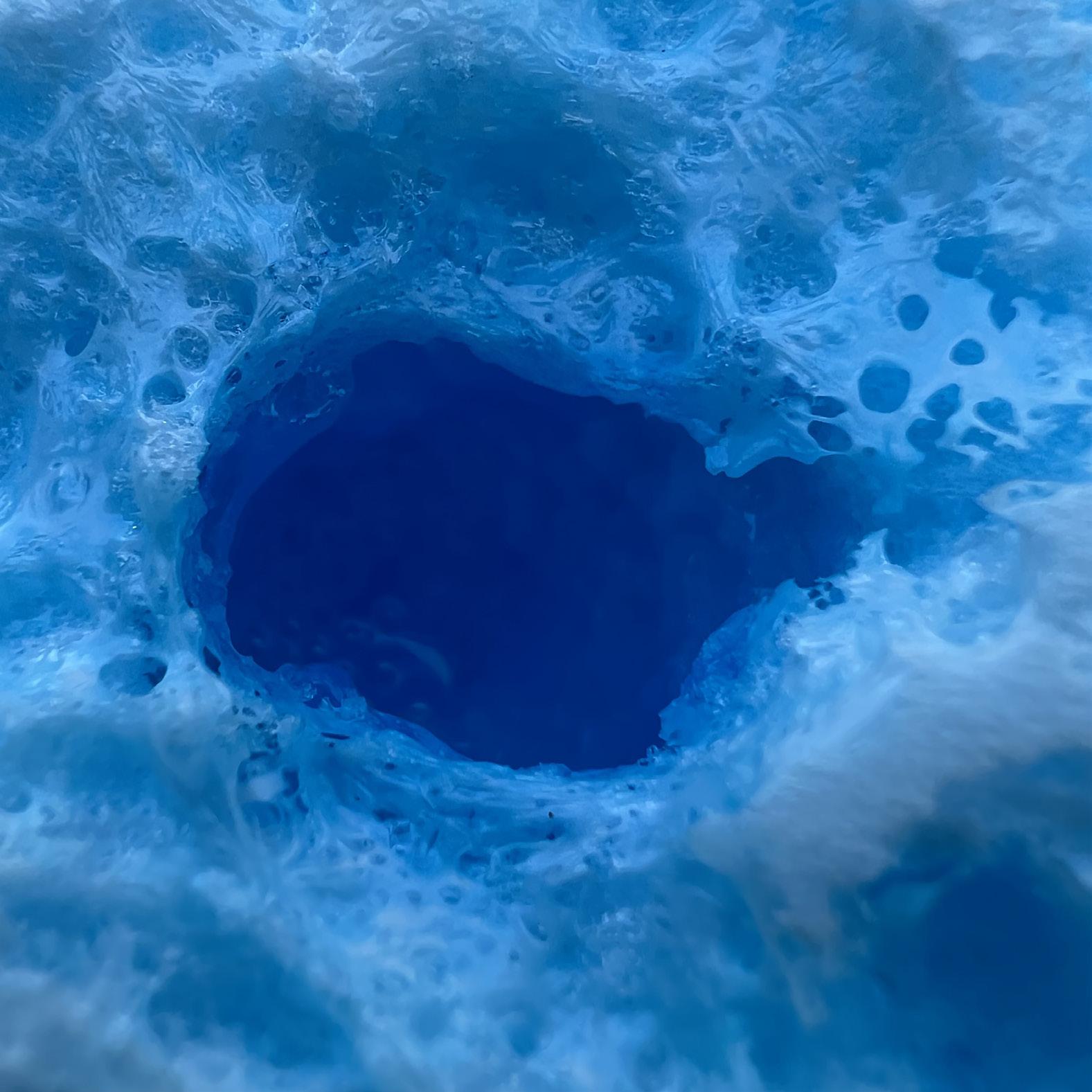

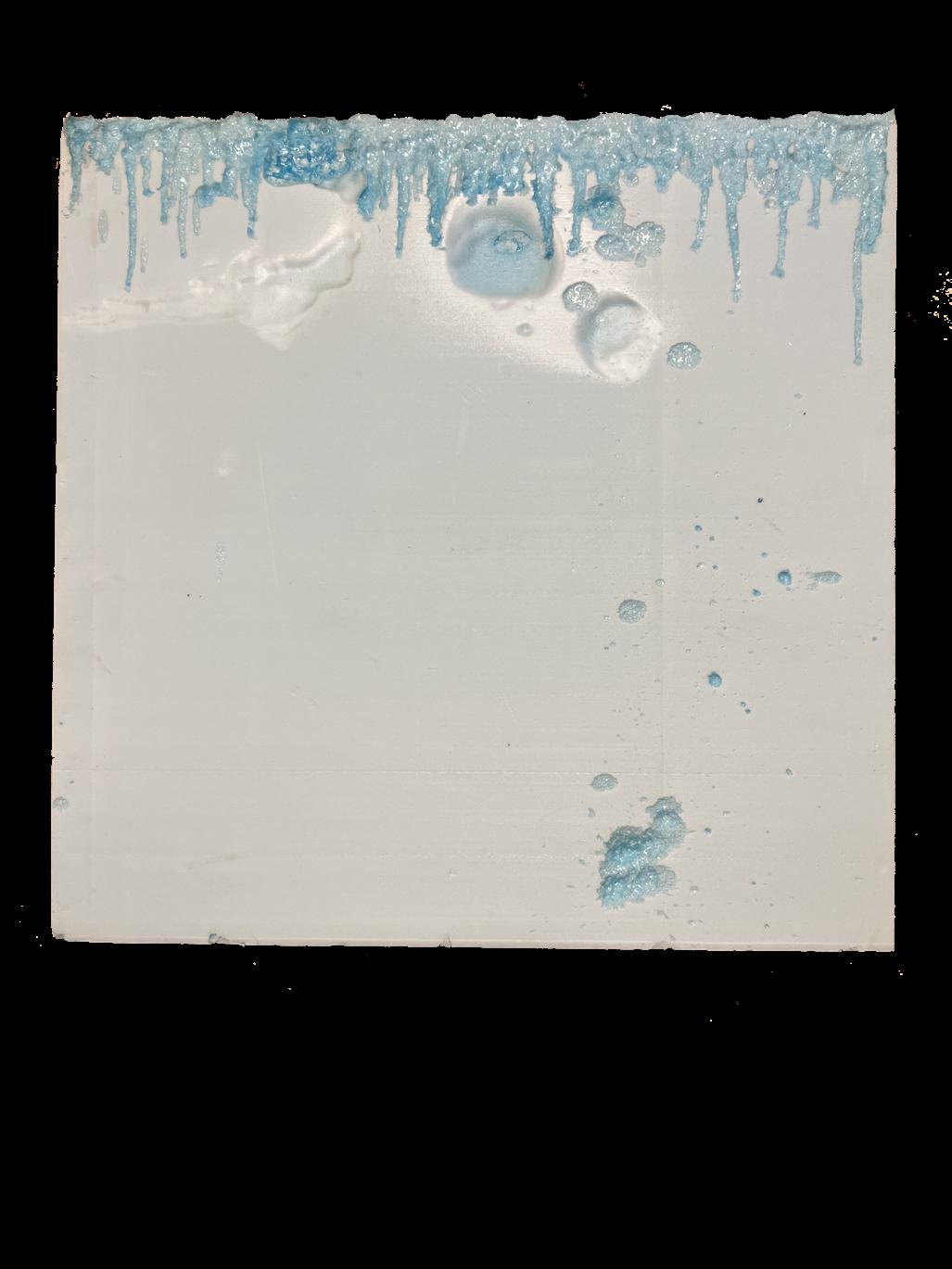

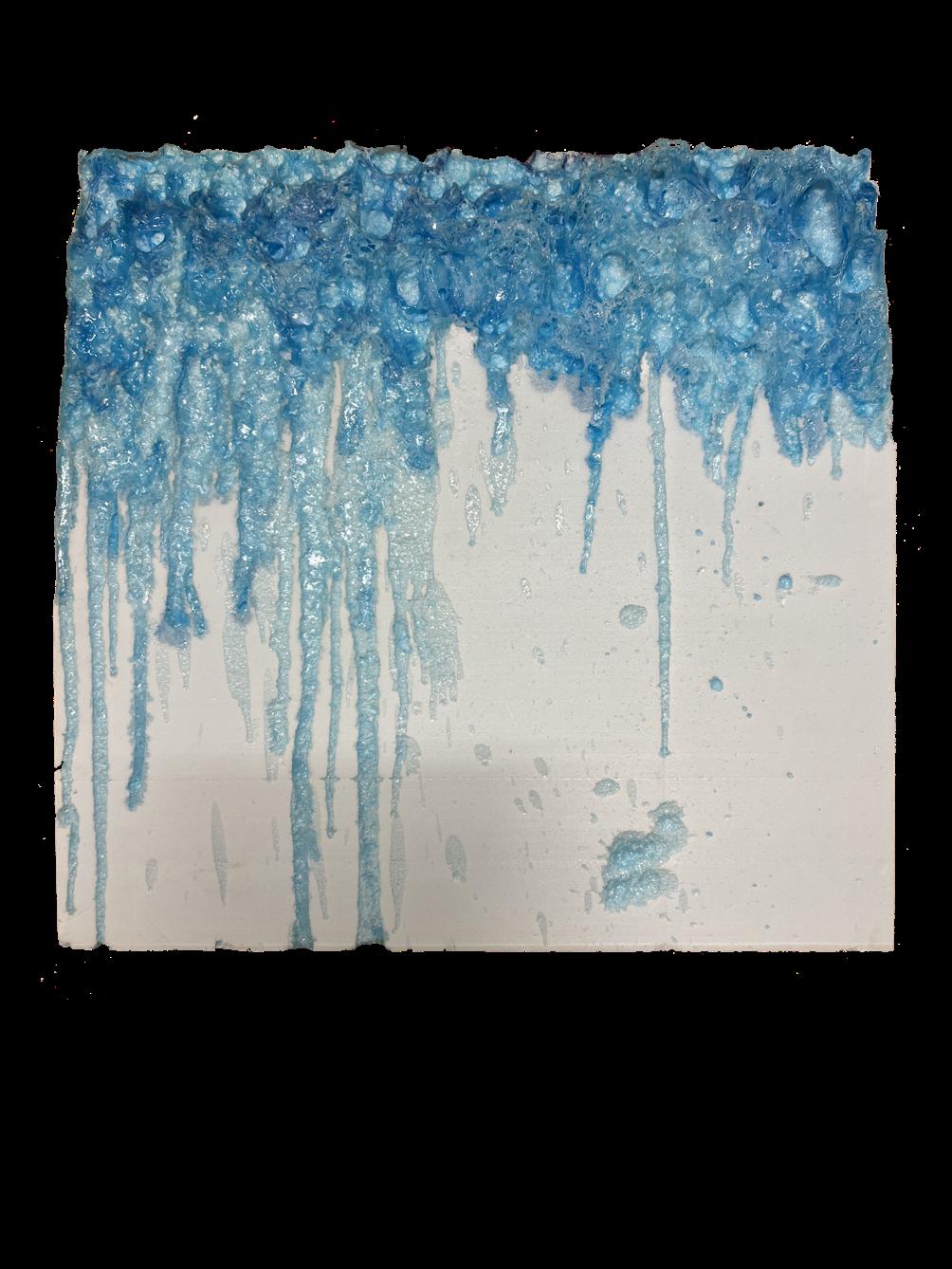
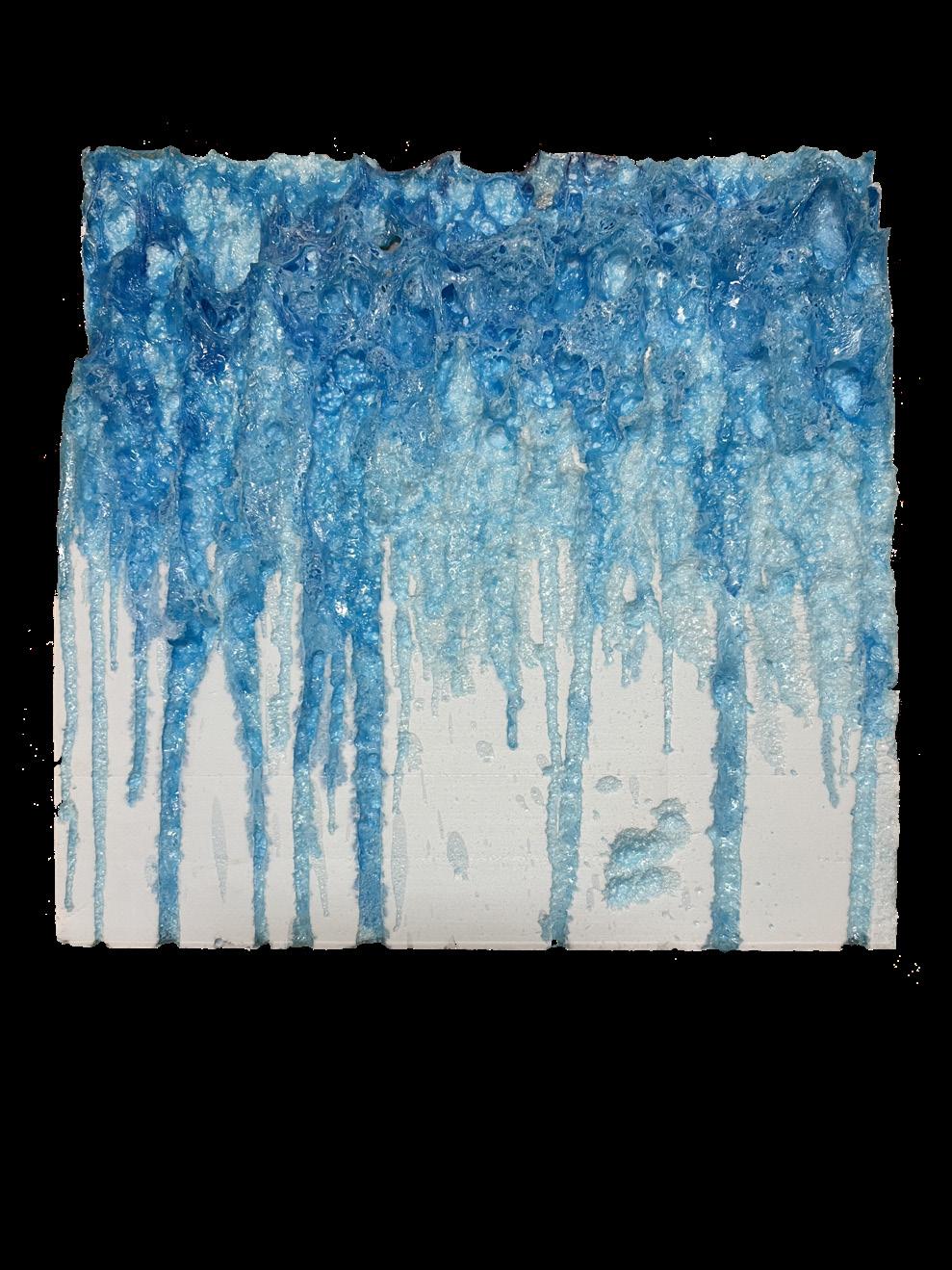
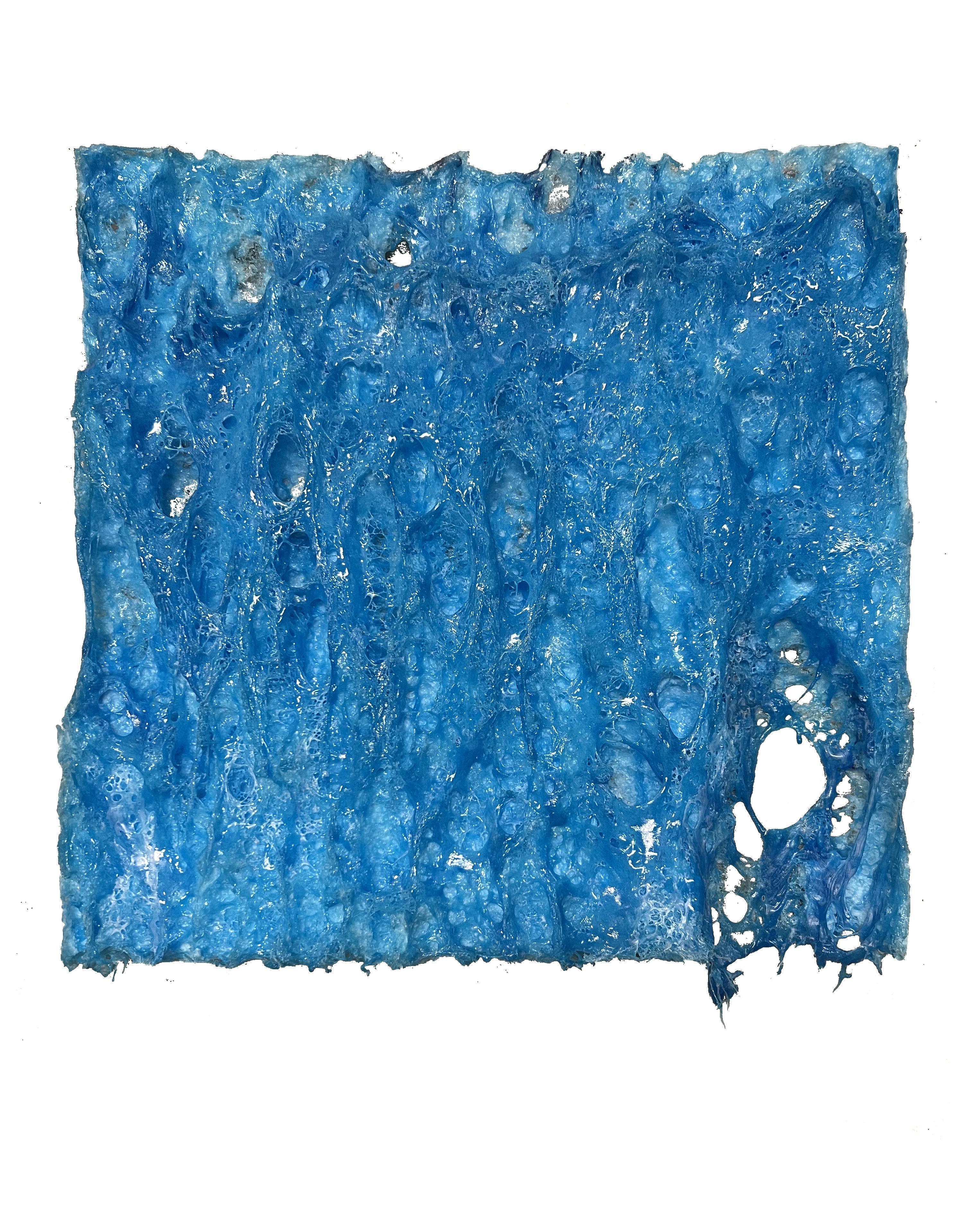








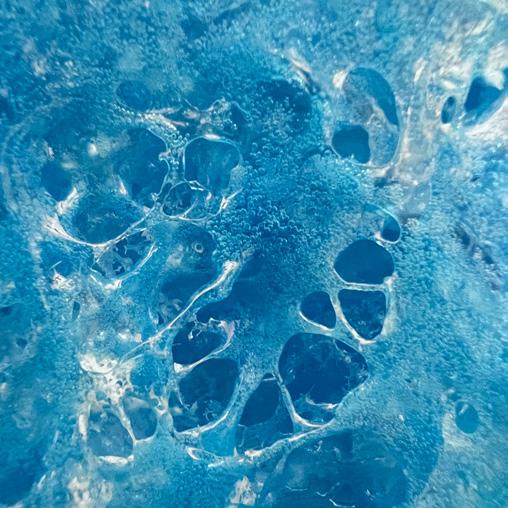




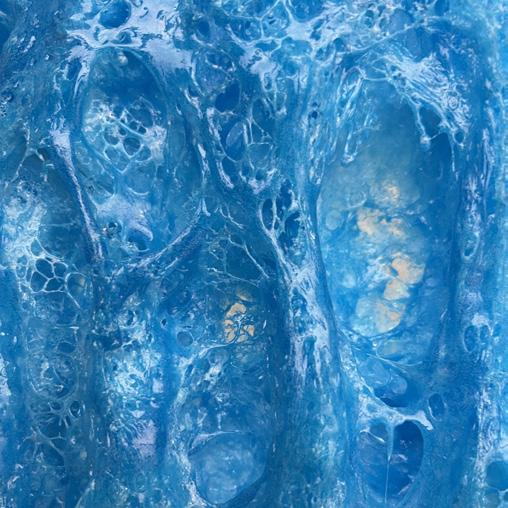





05 MELTED FOAM + PLASTER & ROCKITE
Coats of plaster have now “frozen” on time the previously melted artifacts, preventing these from deteriorating due to physical impacts.
The original form of the melted blue foam models started to go away depending on how many layers of plaster I would add to the models, and how heavy the mixture would be.
At this stage, I was interested in the spatial conditions the models heavily coated with plaster could offer. I sliced some of these with a handsaw to see the sectional conditions of these, better understanding elements of depth, color, texture, and form. Spacious voids were created within the different sections, demonstrating the various levels of porosity and density the melted blue foam models offered.
Simultaneously, I noticed how the rusted coat of the handsaw transferred to the surface of the plaster. I was interested in the relationship that could be created between the artificially made and the natural, and what processes of deterioration could come along. With this in mind, I estimated how rust would expand across the surface over time. I also estimated how the models could start naturally decaying if these were to be left out in nature, estimating how moss could grow on them.



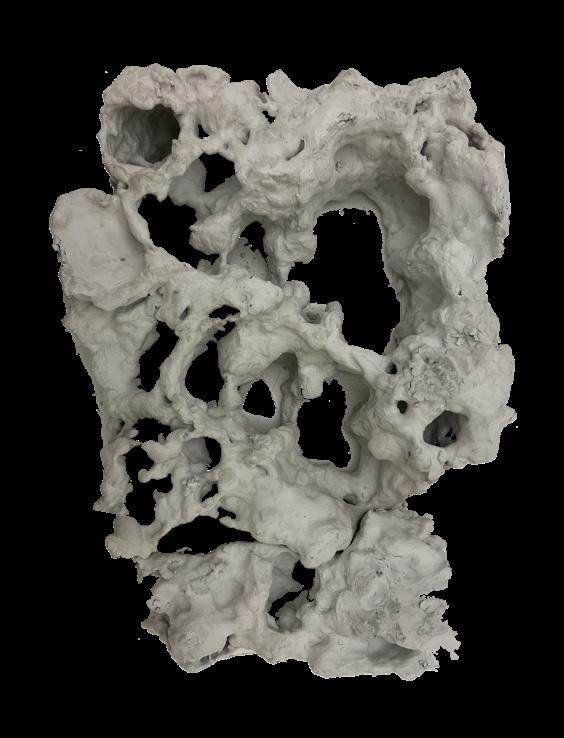

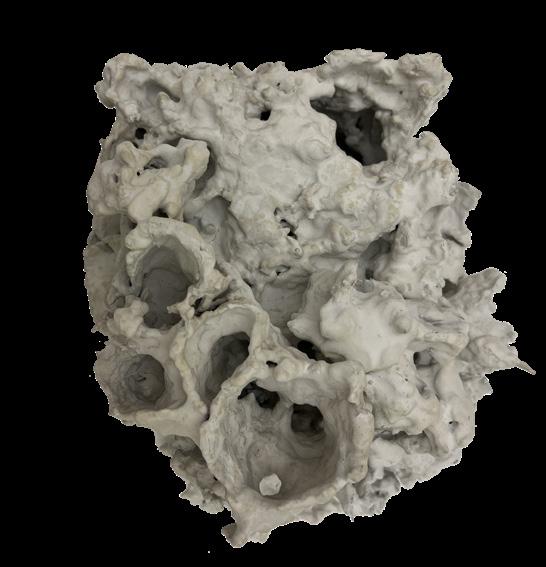
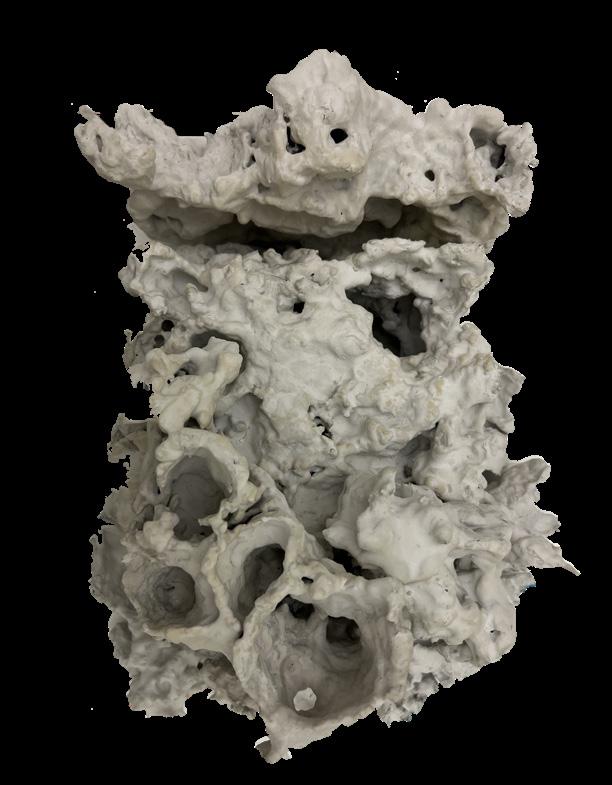
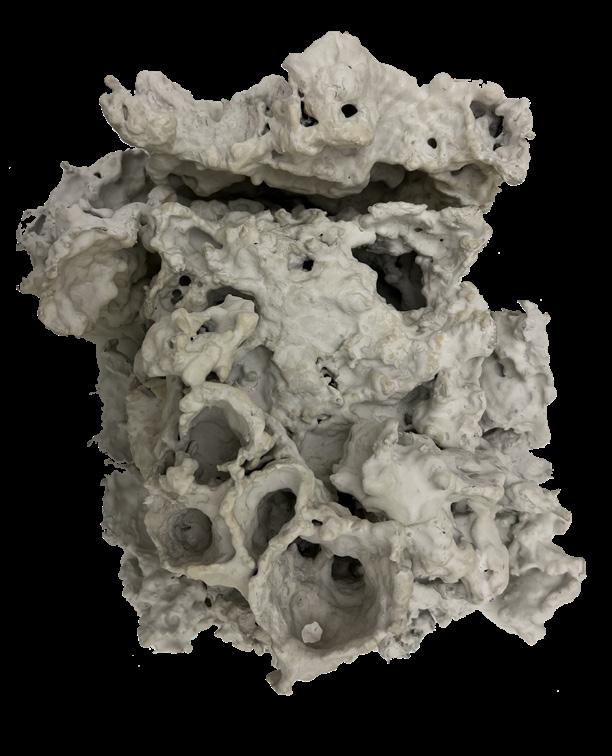
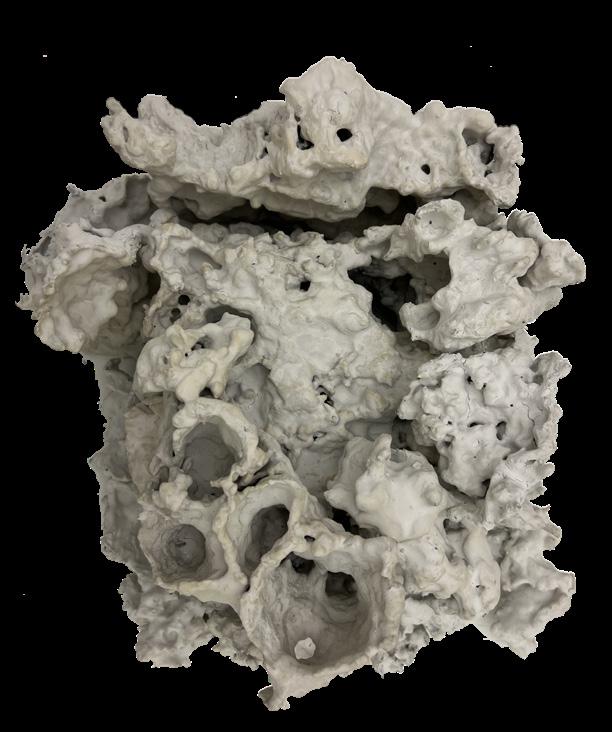

SLICING HEAVY COATED MODELS



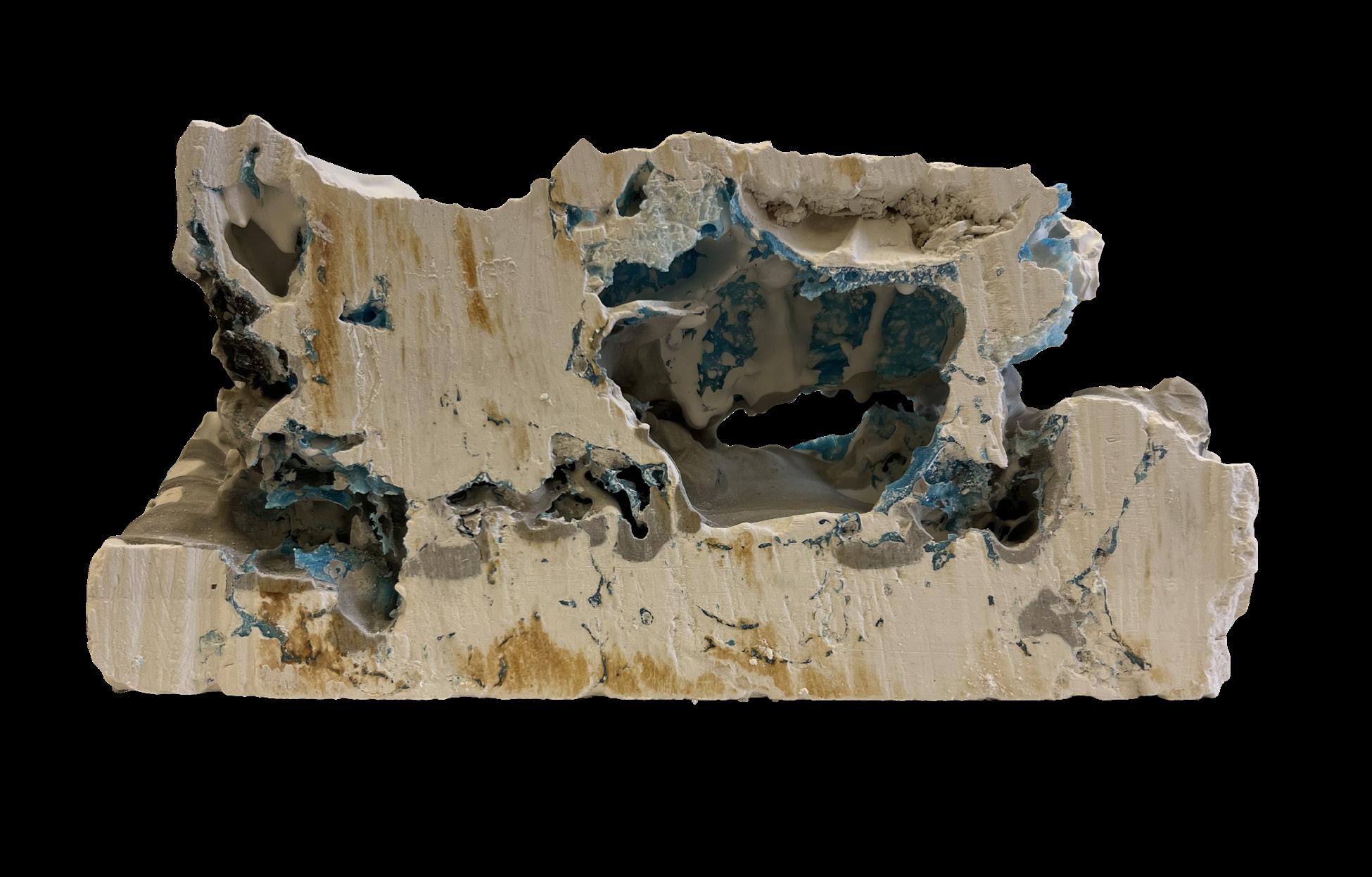
SLICING HEAVY COATED MODELS




PREDICTION 1: MOSS ON SURFACE

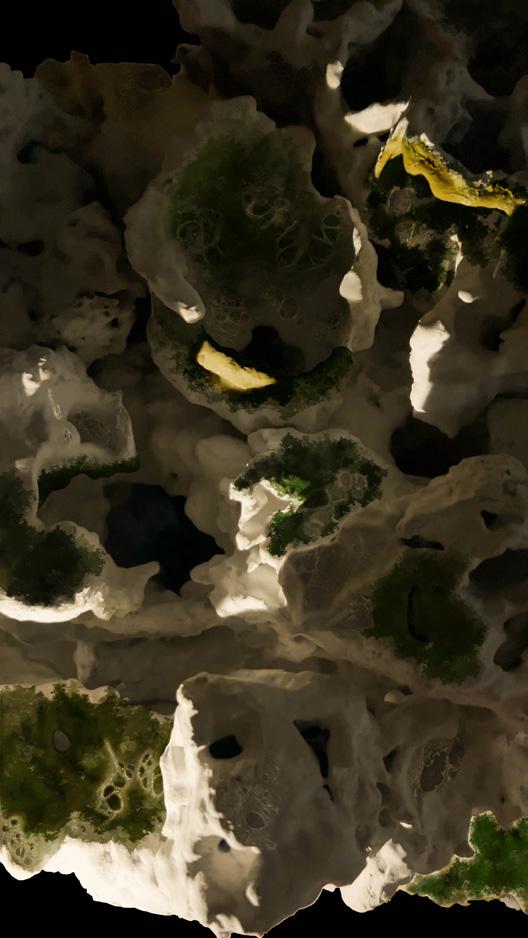

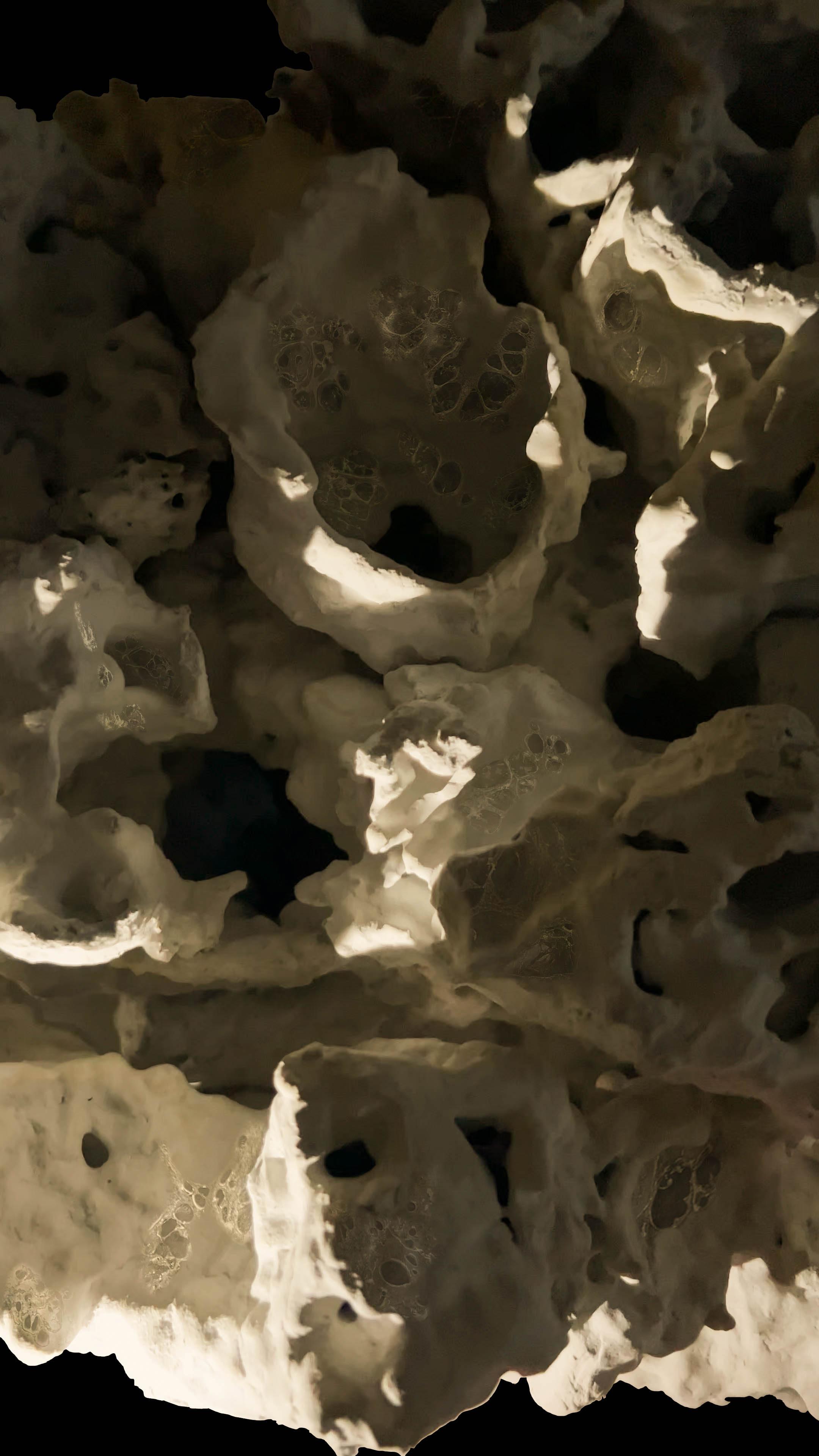

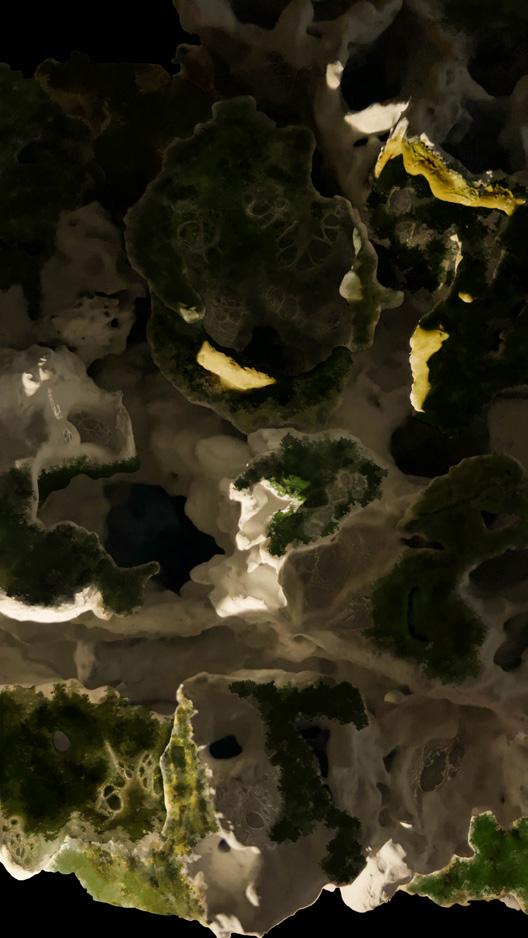

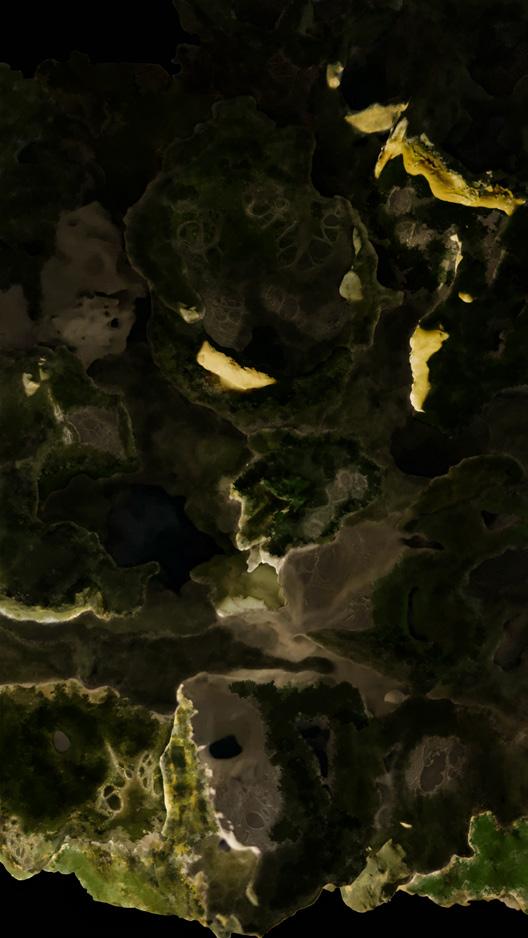
PREDICTION 2: RUST ON SURFACE



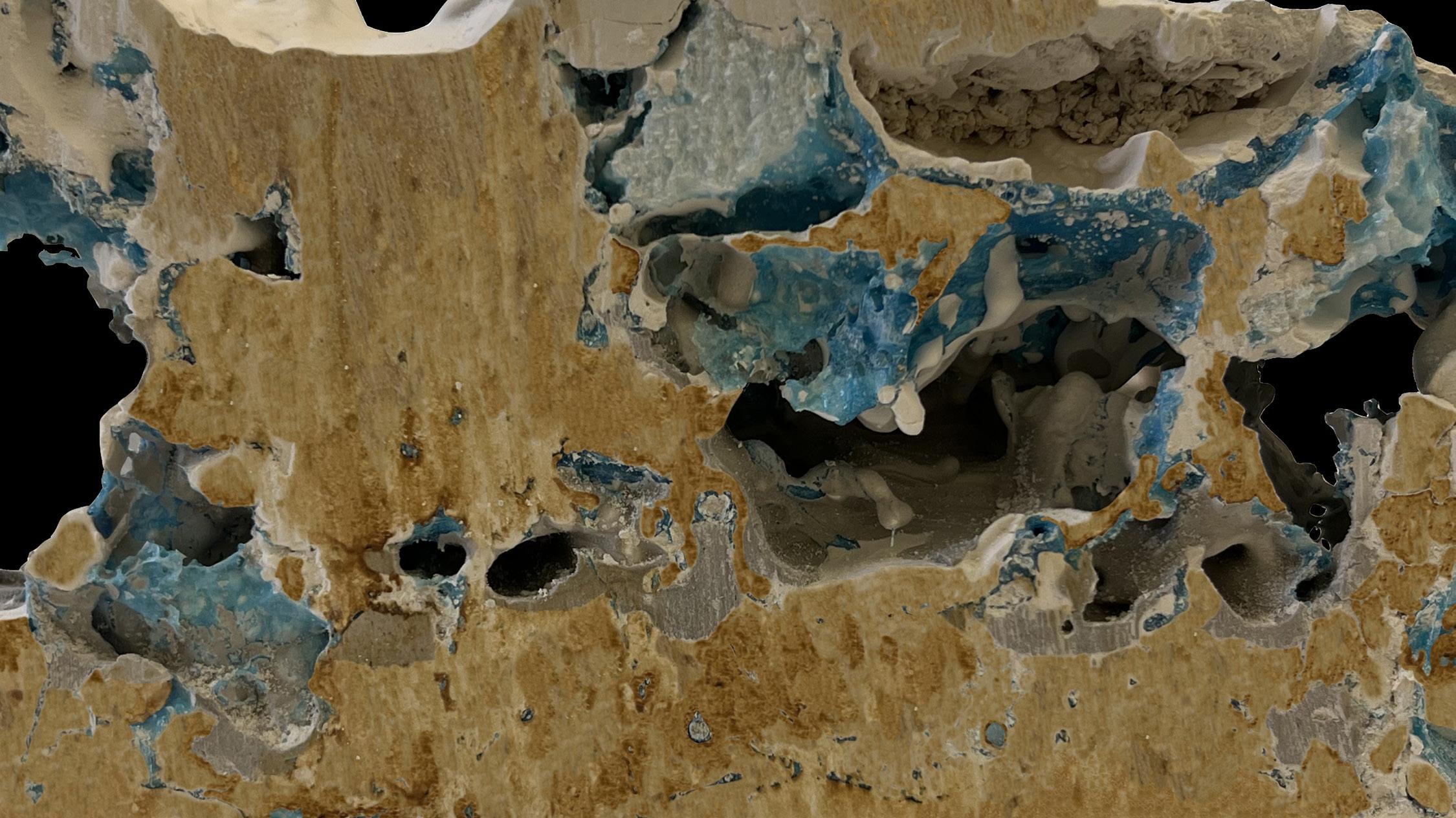
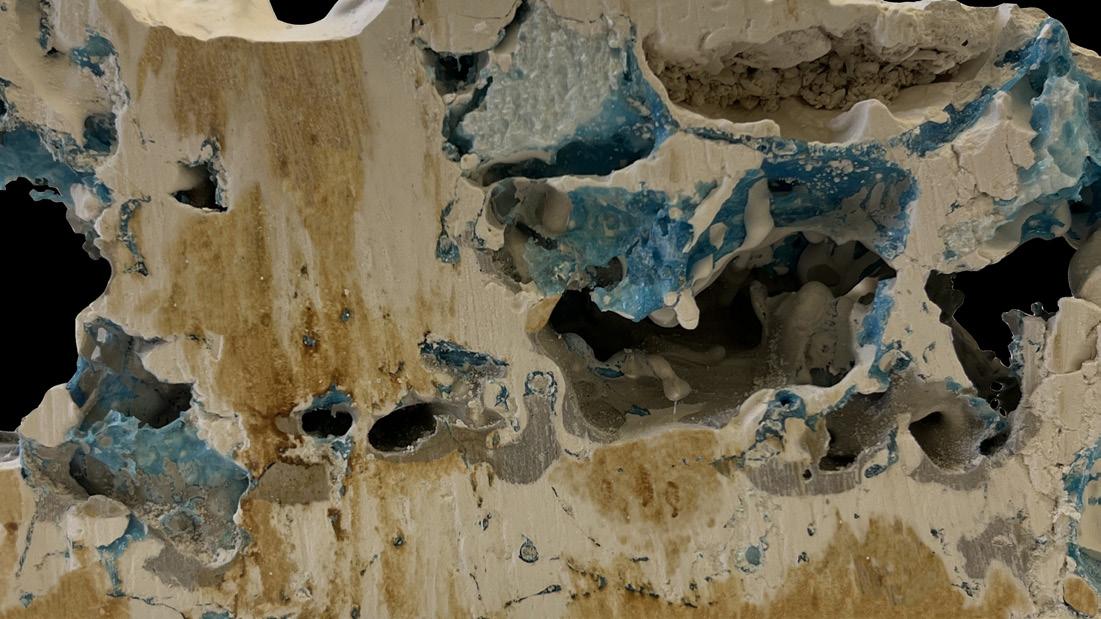

06 LAYERING
Time is regisered through layers. These can communicate how the model was done through multiple steps, rather than being done all at once.
I was interested in the ideas of layering and how this could affect the conditions of what I was making. I took the plaster & Rockite coated models and coated them again with multiple layers of paint and then condensed these into a block made out of plaster and Rockite.
The results of the cuts were more intricate, and even more so when I was able to still melt some more of the foam, creating a different effect on the voids than the previous models. Also, I noticed that some of the layers are sometimes easy to see from a distance, like the difference between plaster, Rockite, or paint, but others require closer attention as the details are smaller, involving the multiple layers of paint. People’s level of engagement with the artifacts determines how much information they can perceive.
These sectional cutss inspire reflection on what today’s time and space mean relative to erosion.
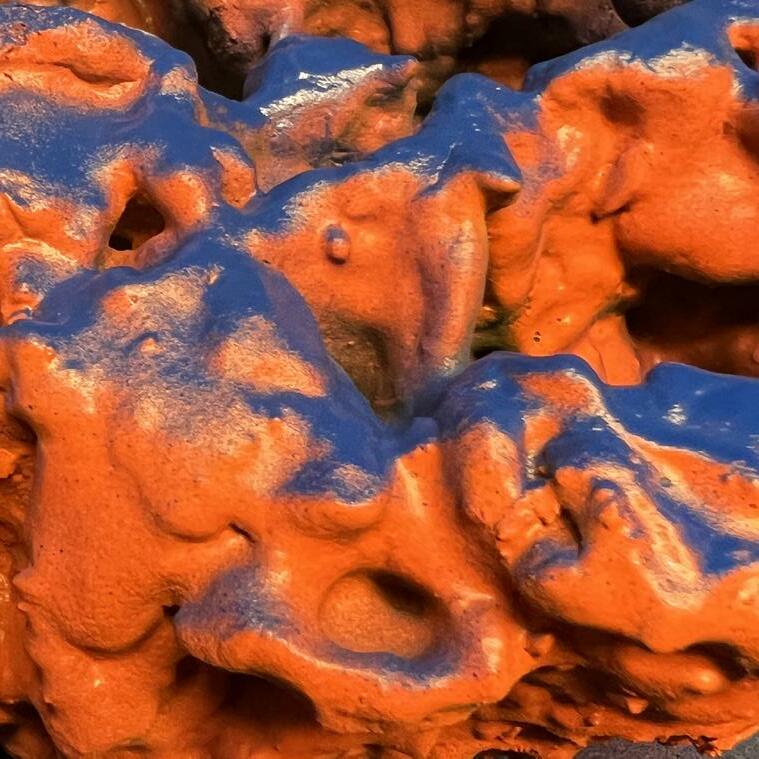

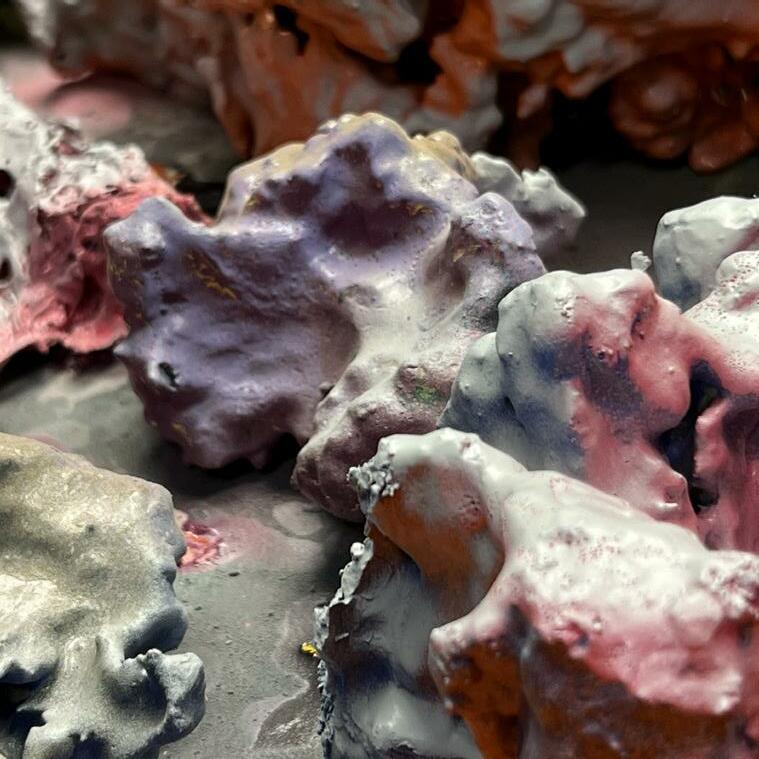



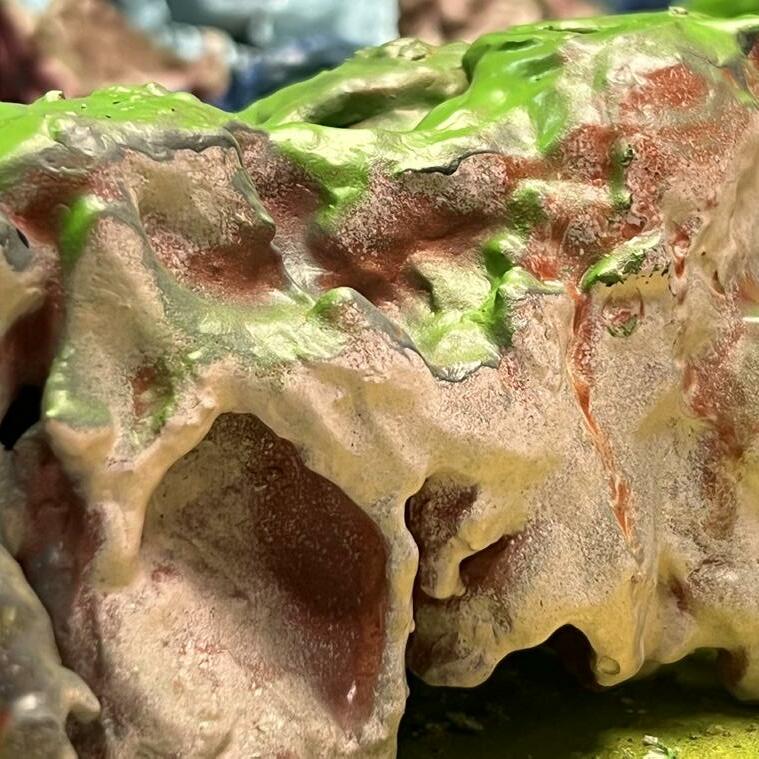

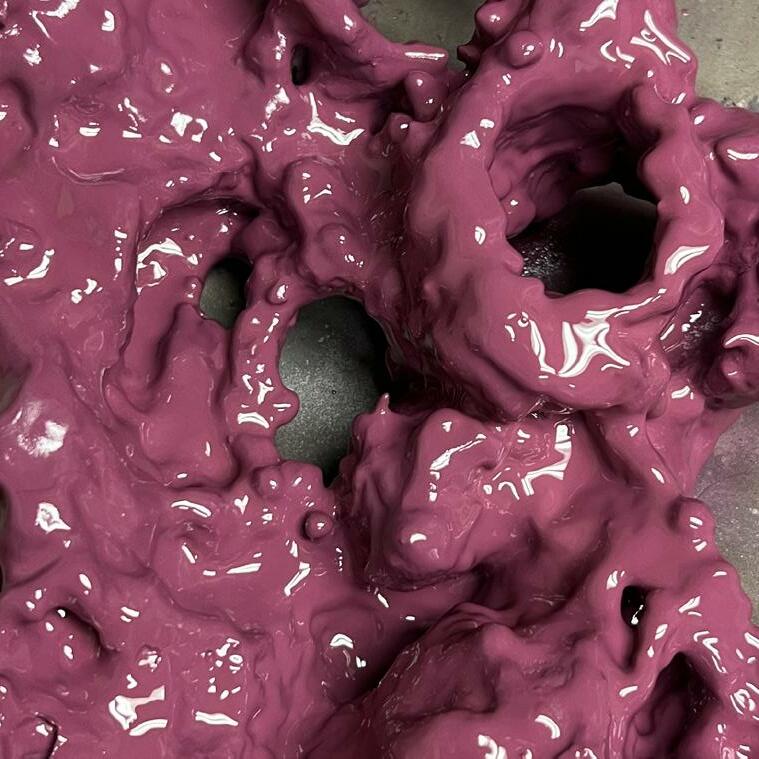


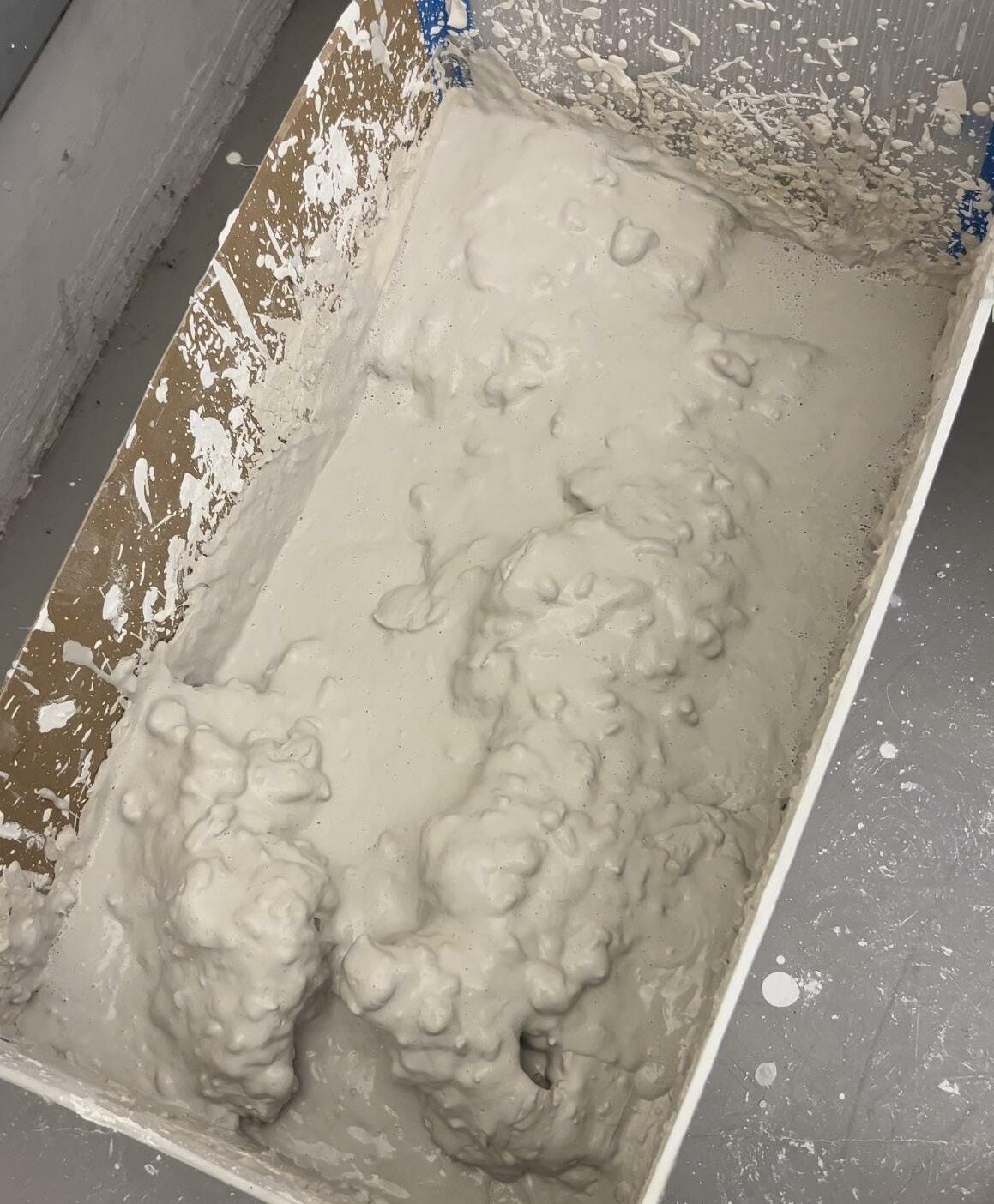
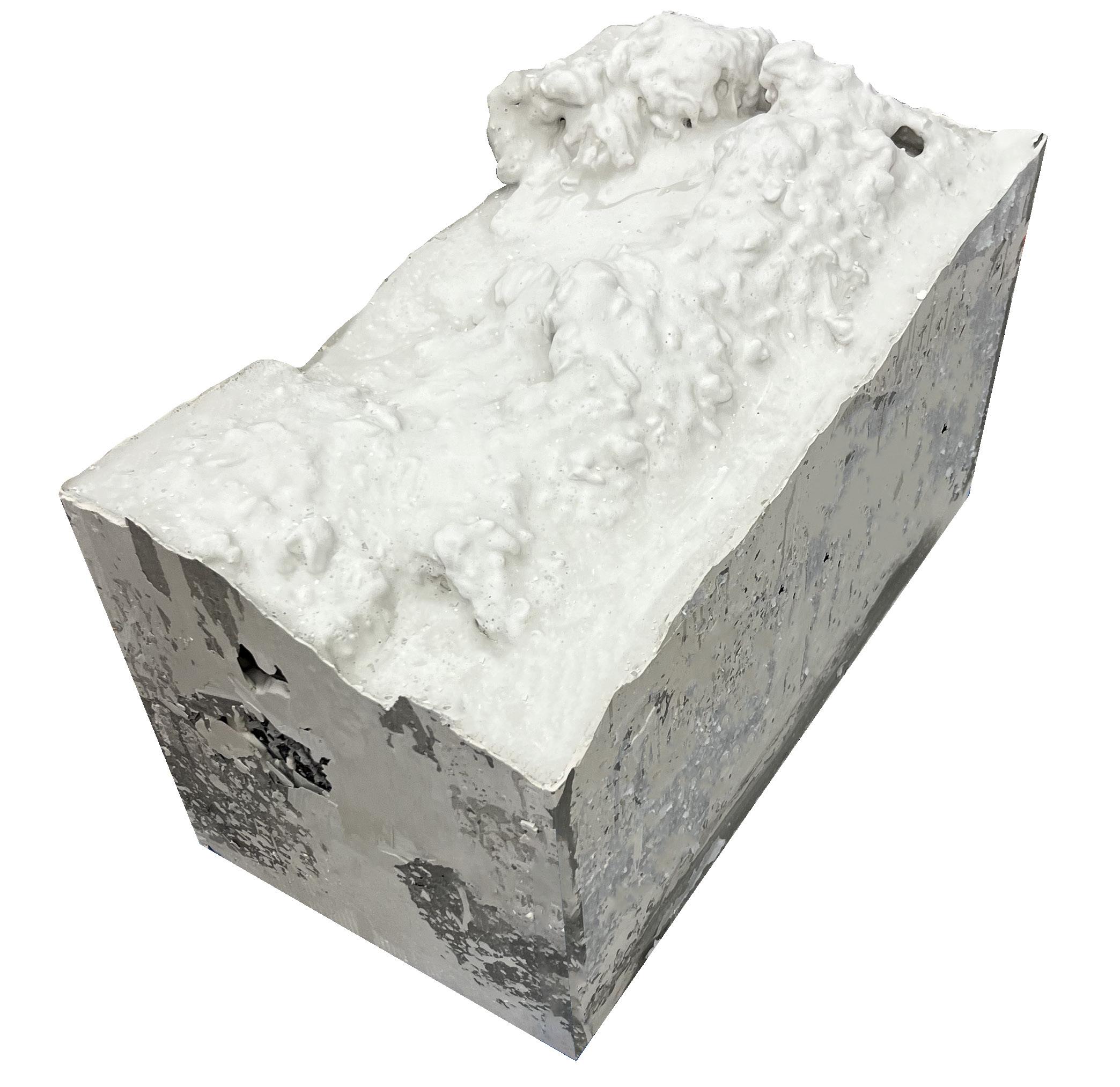

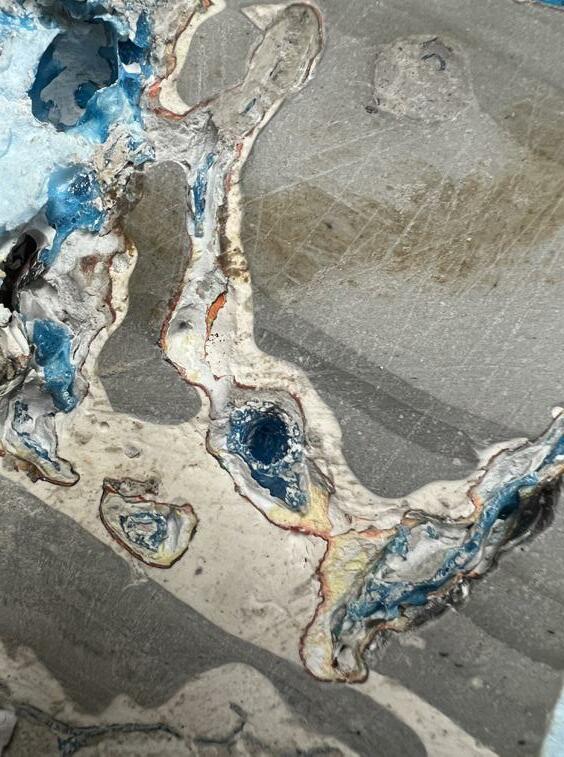

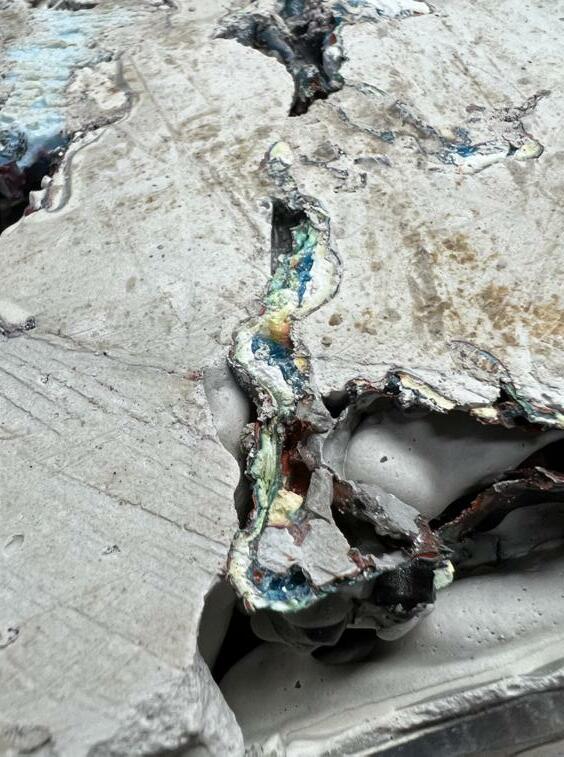





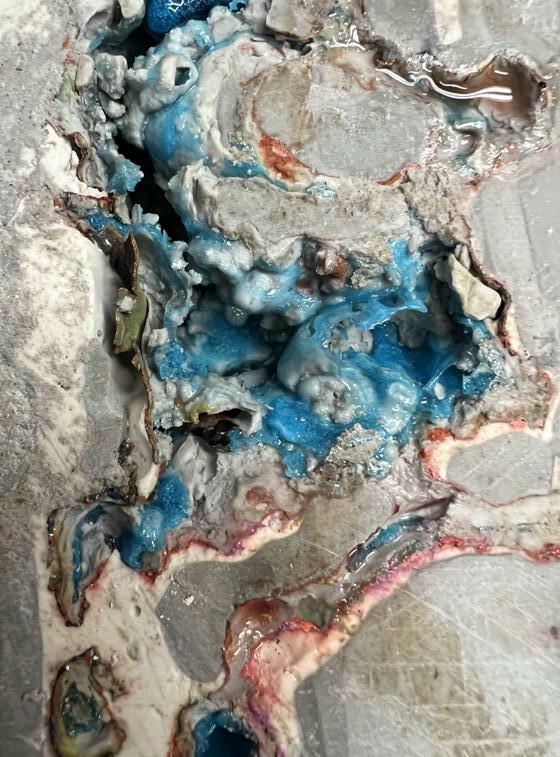
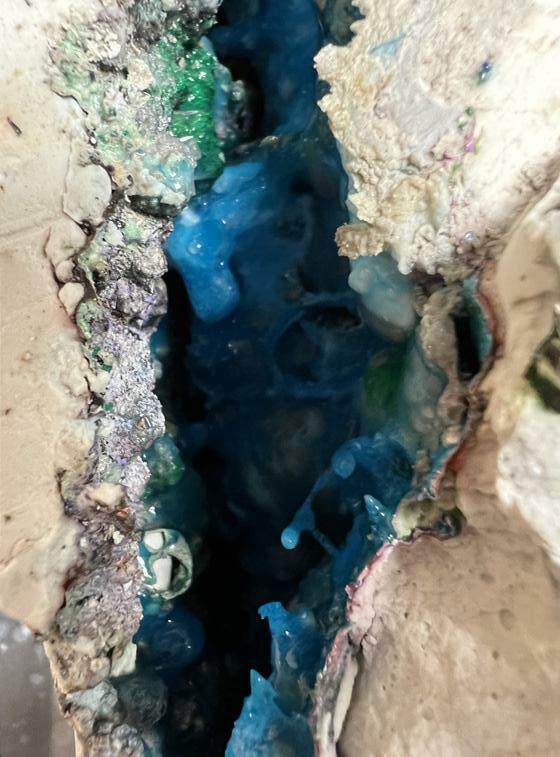

Our current built environment is filled with materials that undergo constant transformations.
I developed a series of study models to understand not only how the materials themselves would change, but also how these would affect the surface of what they are being casted on. To do these, I used blue foam, wood, steel and copper. The blue foam model was able to capture the materials form as this was later melted, while residues of it were left behind. The wood model, which was burnt, and the steel and copper models not only demonstrated the transformations of the materials themselves, but also how they left residues on the plaster without altering their form.
The first series of cubes estimate what the effects of constant flooding would look like on a material. The humidity starts darkening it, later resulting in the growth of moss from the particles carried through the water and making the material weaker until it breaks.
The second series estimate the effects of nearby fires, and how creosote starts taking over and darkening the material. Normally, this is seen as chaotic, dirty, messy, and disruptive, but what if instead one pushes for the use of these materials and their ability to change, and allow for their natural transformation to happen to inform time and weathering through space?





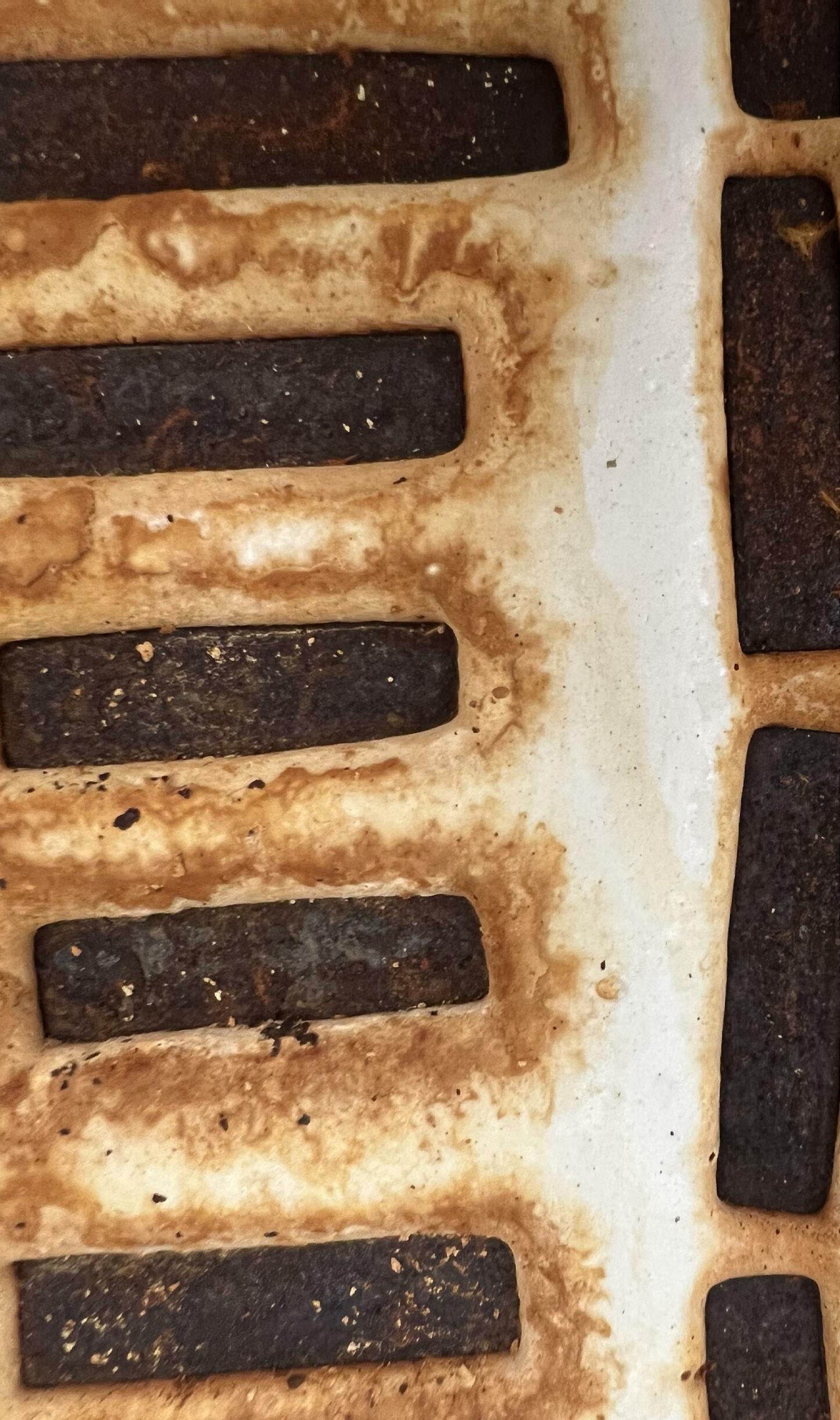



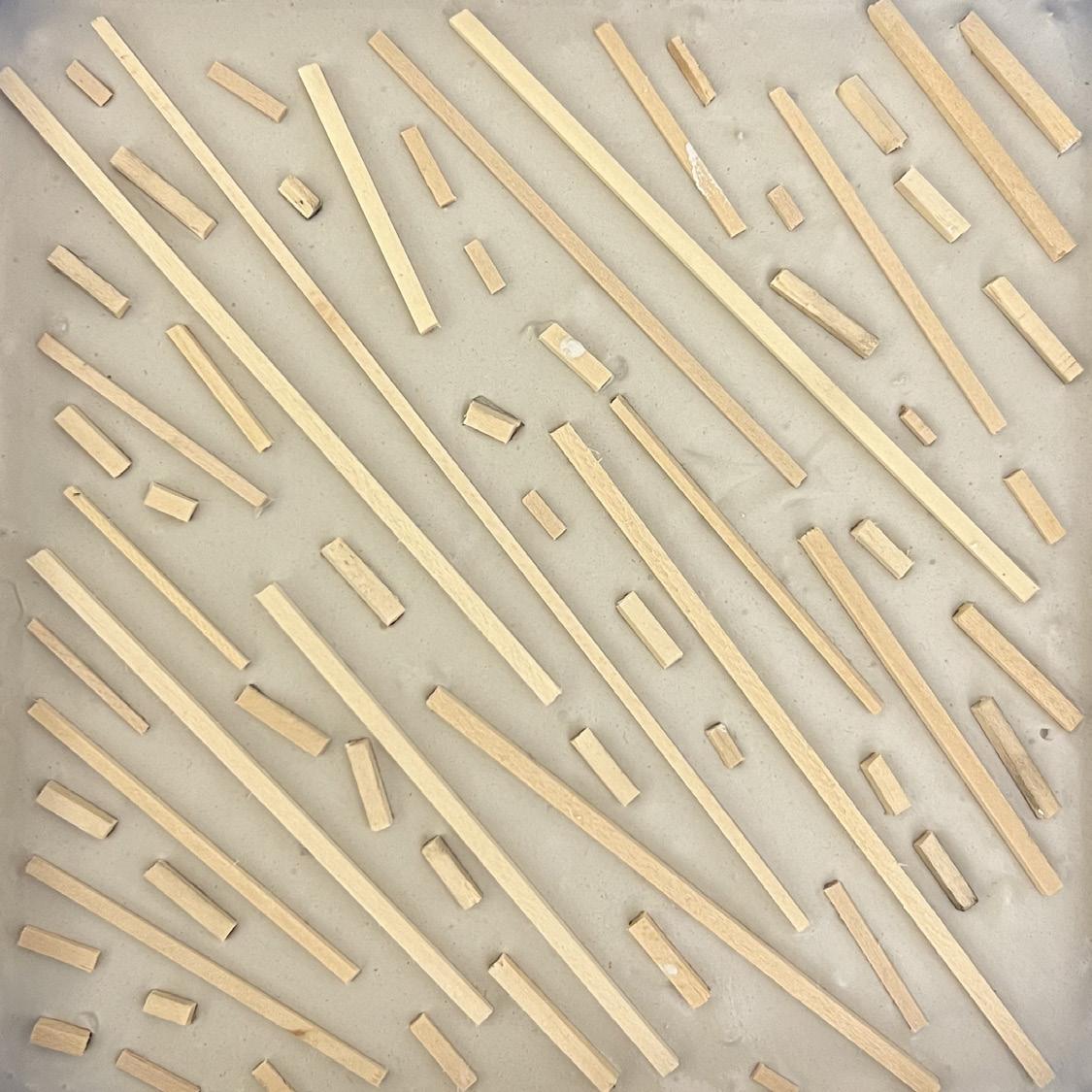
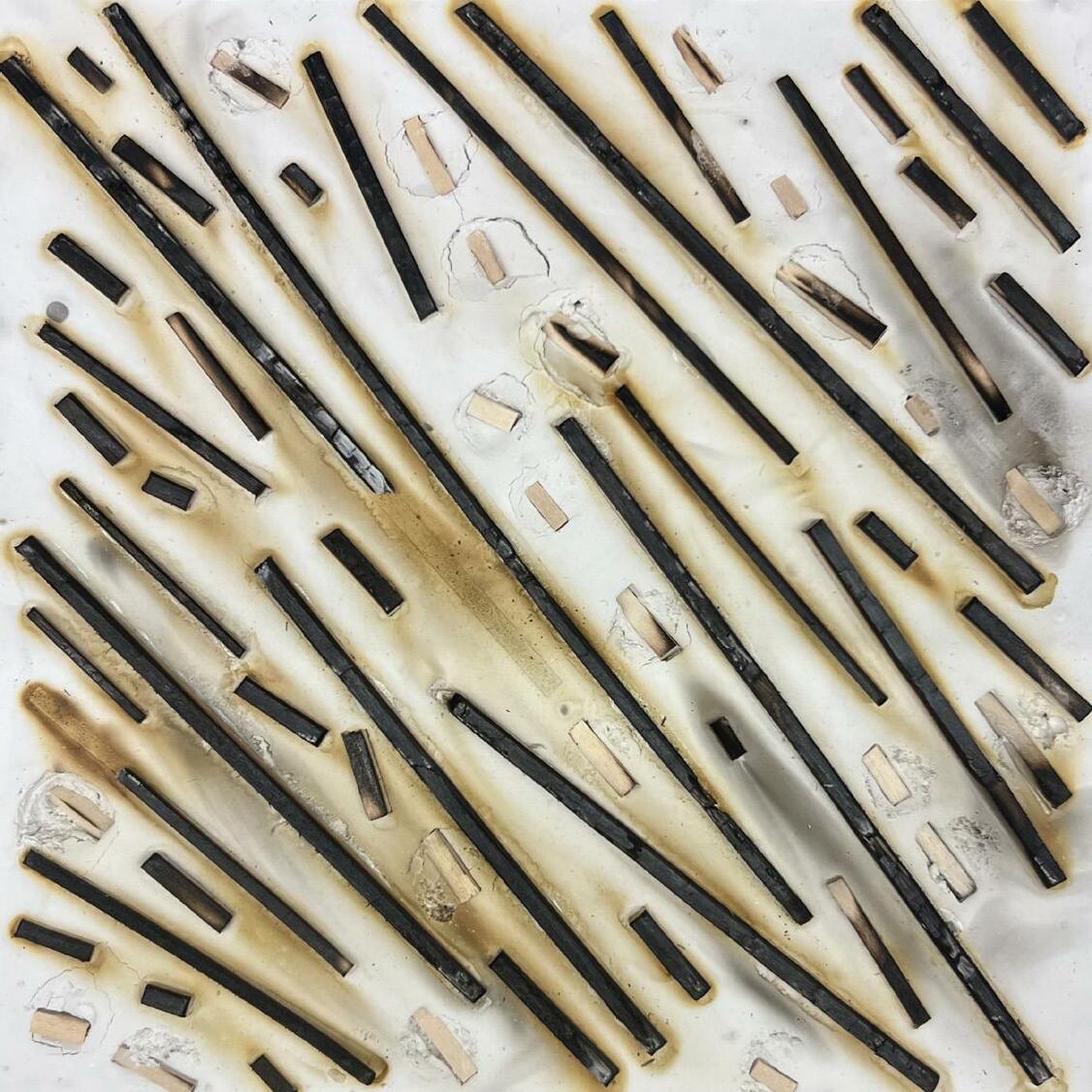
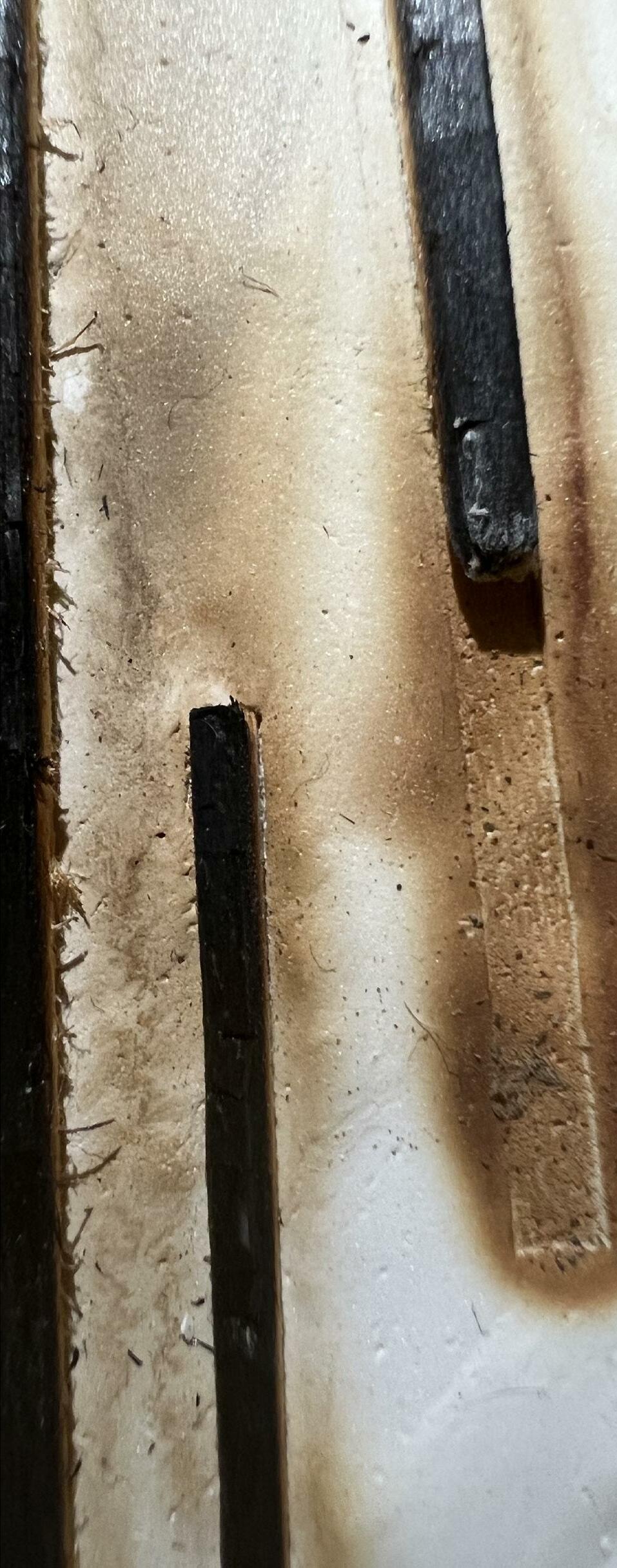
PREDICTION 1: DECAY DUE TO FLOODING

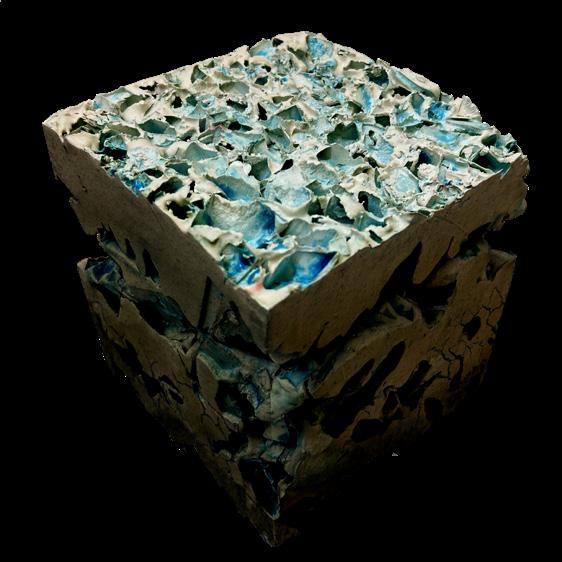
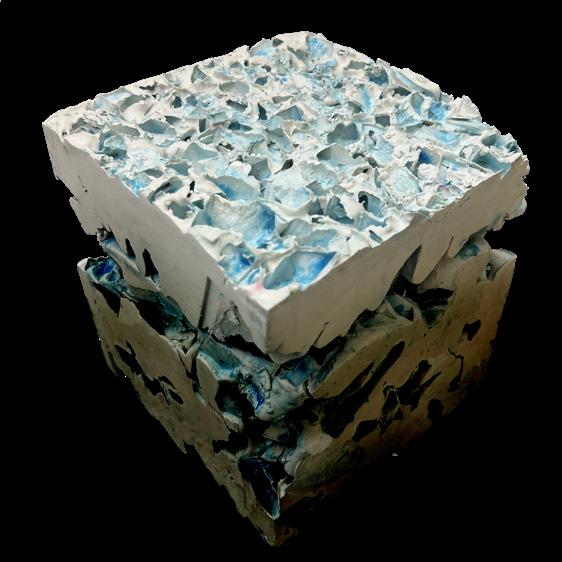
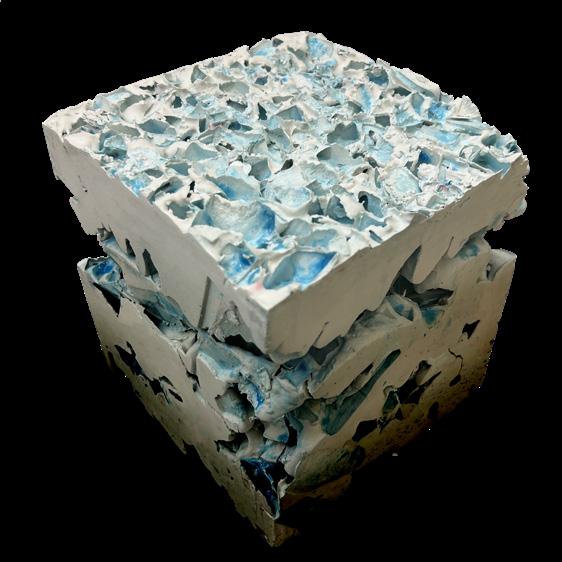
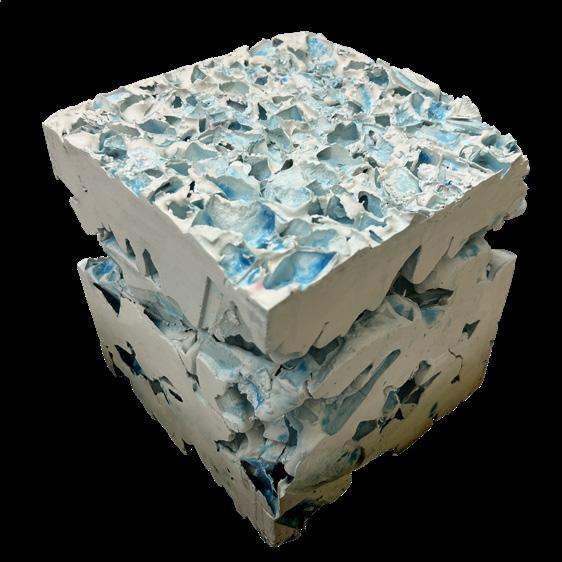

PREDICTION 2: DECAY DUE TO NEARBY FIRE
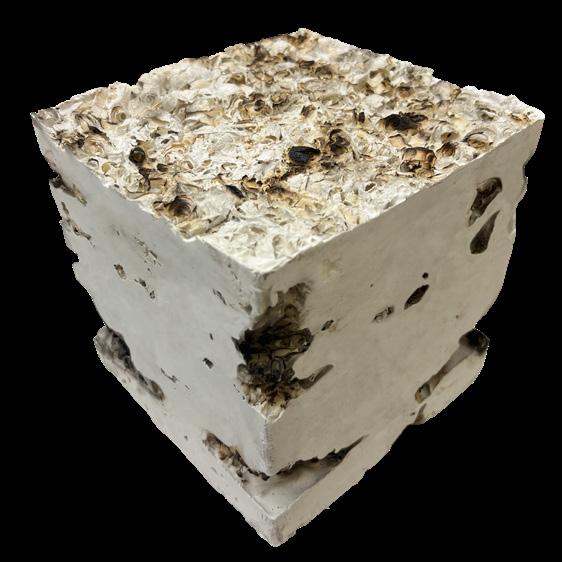

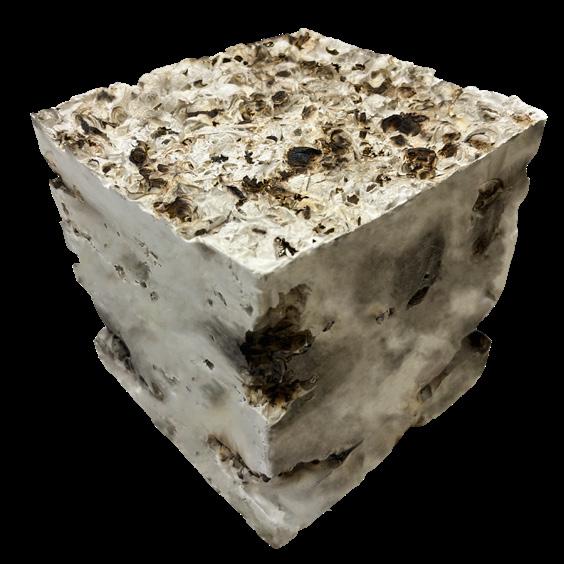
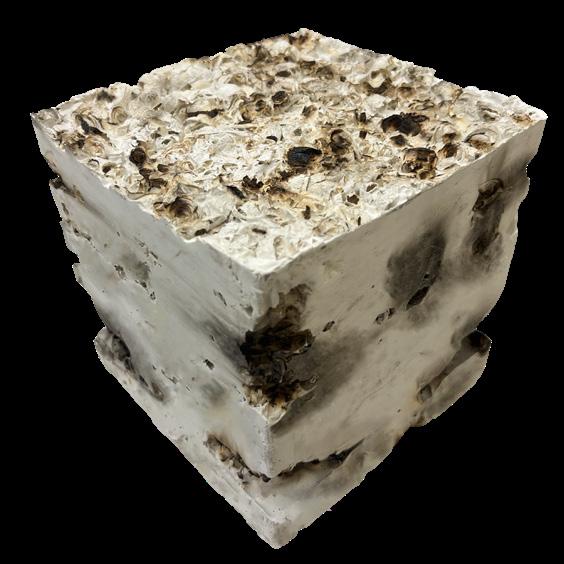
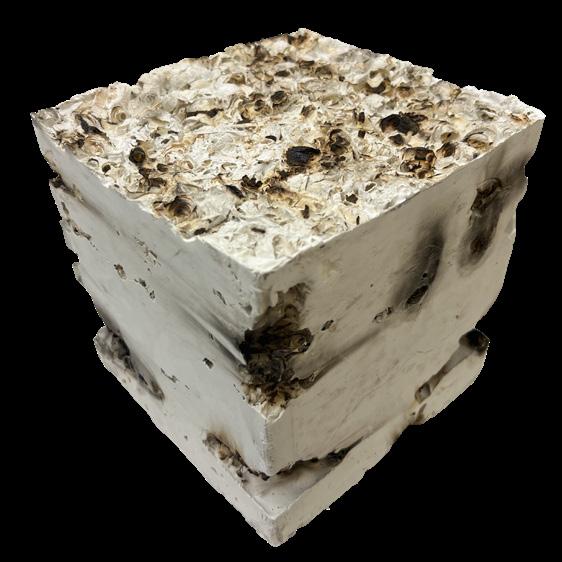
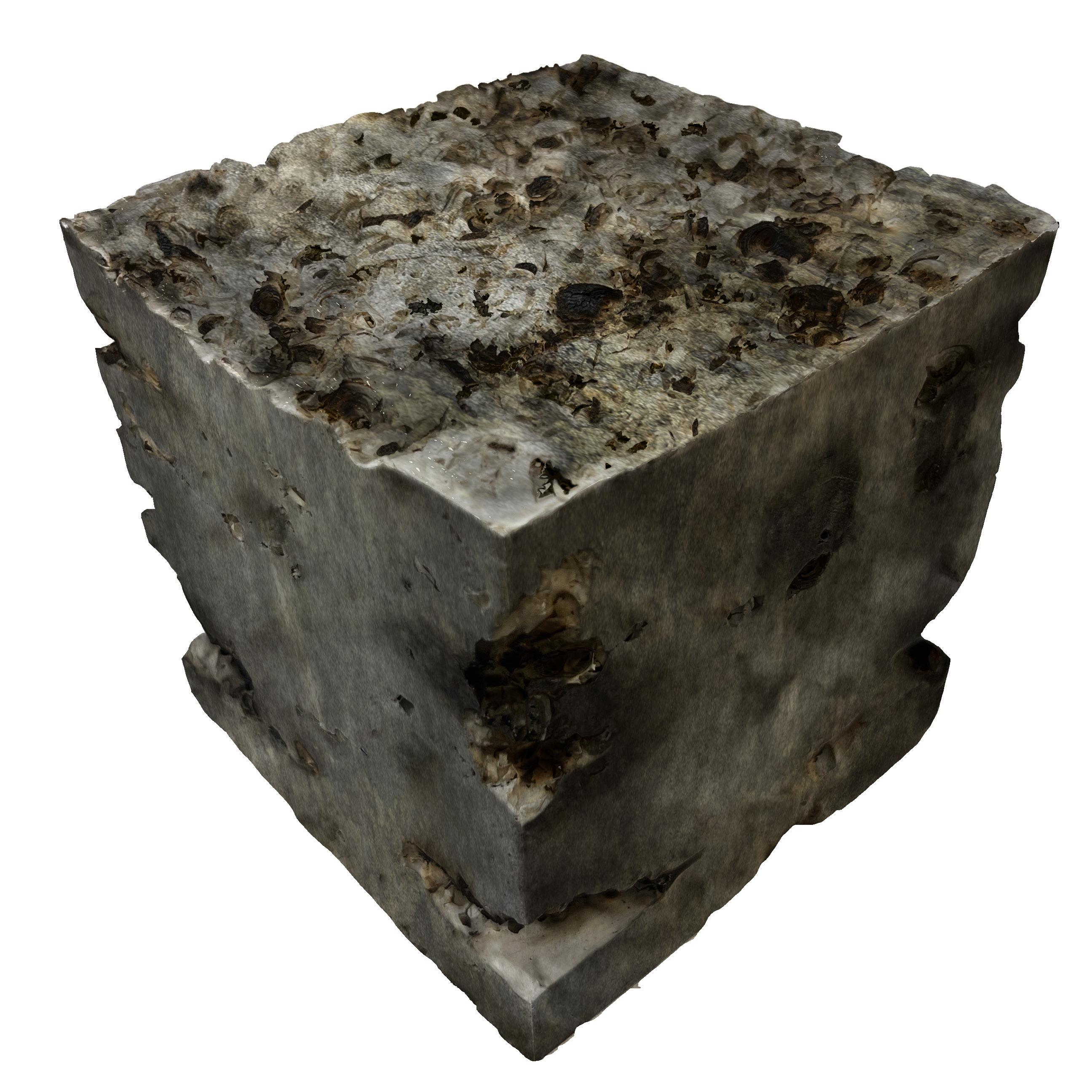
08 VISION
The following collages explore ideas of adaptive reuse by using already existing structures and casting them in a way that allows for them to weather out and expose how these materials would interact with the environment over time.
From a simple frame structure, these would then become areas of material contemplation, pushing for the adoration of what’s decaying.
The first series look into steel. While making the study models, I first applied hydrogen peroxide to the surface while it remained horizontally positioned, creating an even coat of rust across the surface. I then questioned how it would change if the hydrogen peroxide was sprayed while this remained vertically positioned instead, which allowed me to better understand how this effect would take place on a standing structure. The drawings illustrate how I estimate the structure would look after being exposed to strong humidity.
The second series look into wood. While burning the study models, I noticed the burnt wood would remain attached to the surface, while affecting the plaster with a black and brown-ish coat. The drawings illustrate how I estimate fire would then affect a casted wooden structure.
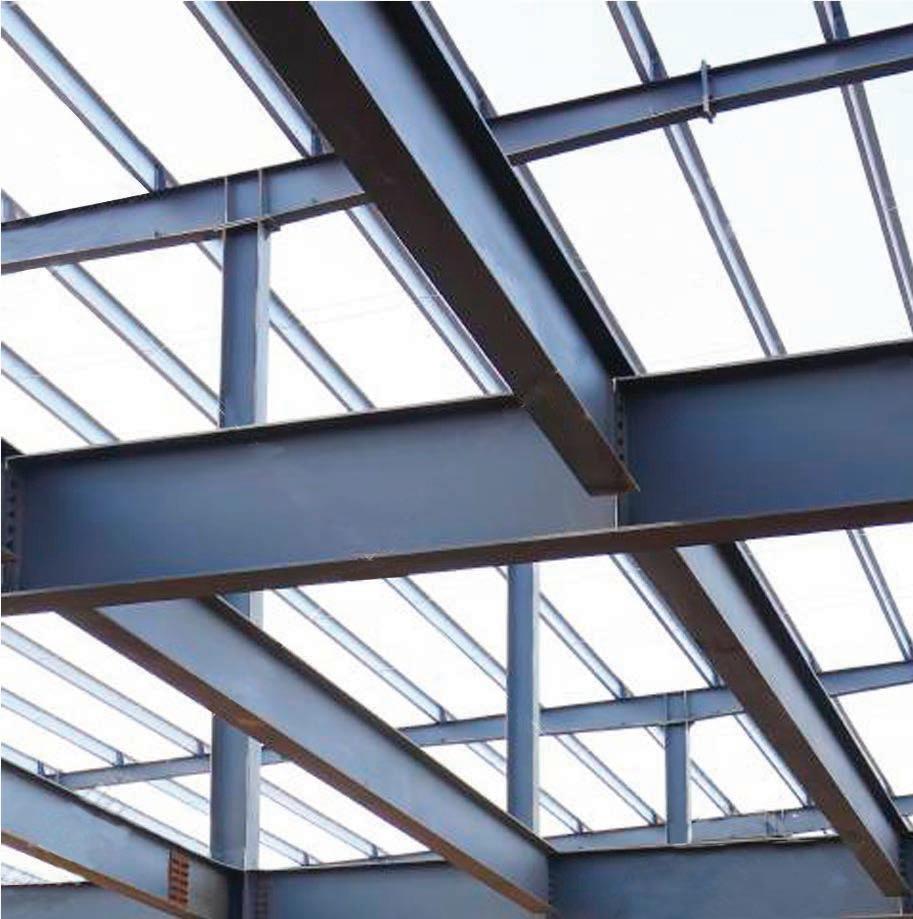

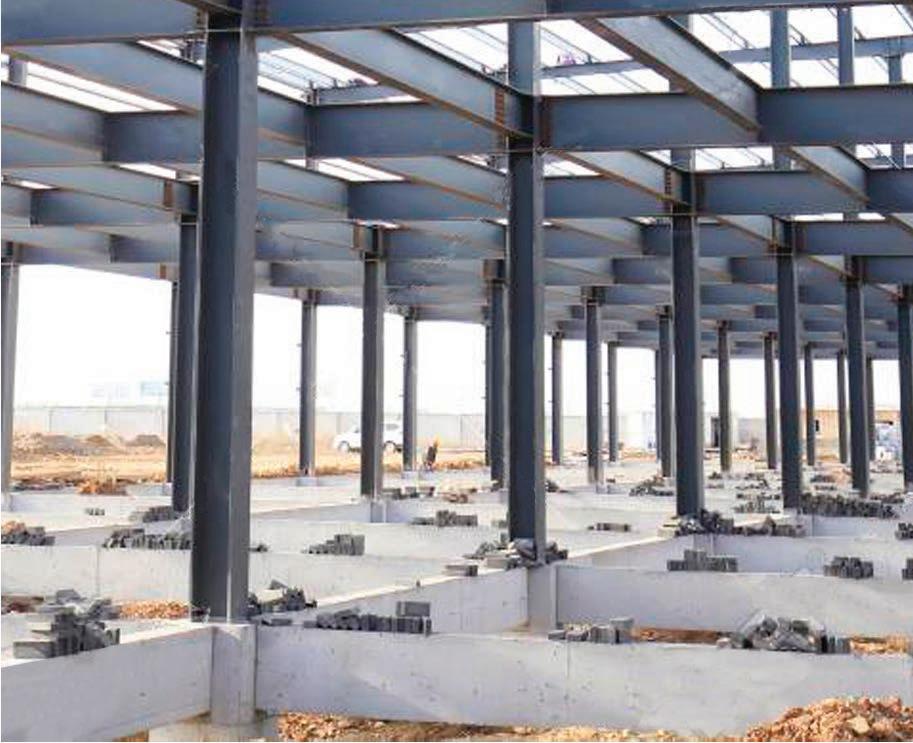


PREDICTION 2: DECAY DUE TO NEARBY FIRE
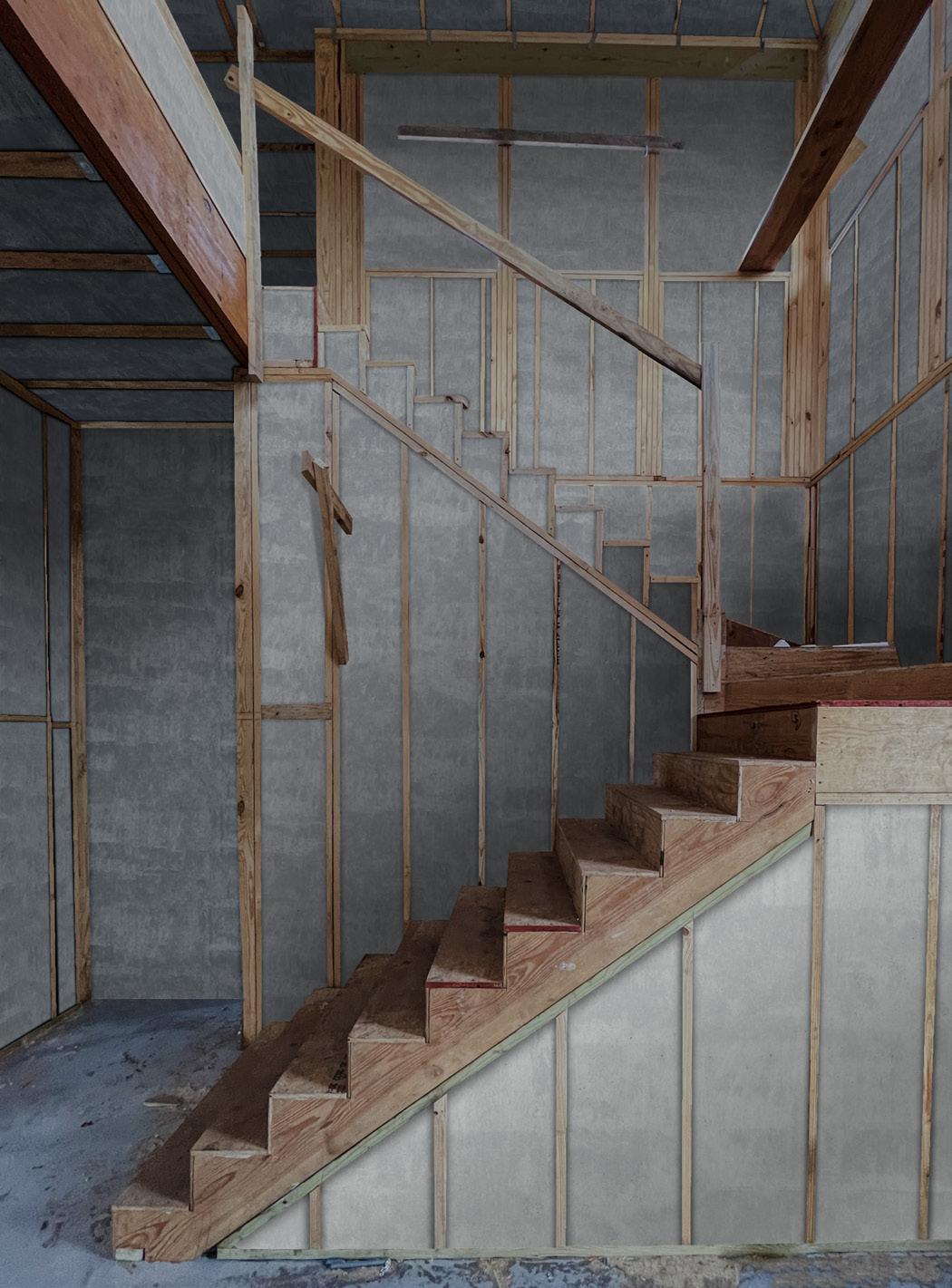
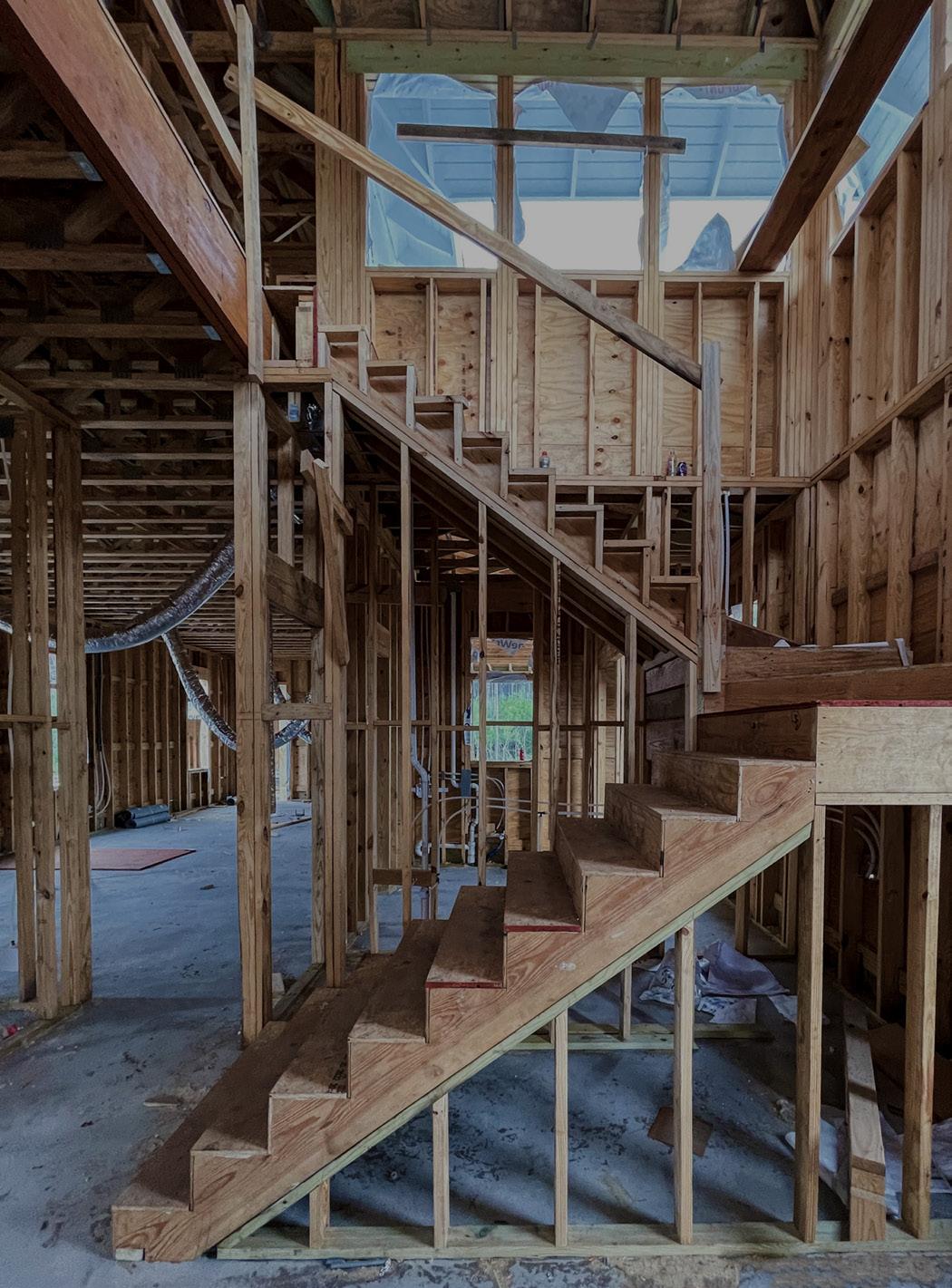
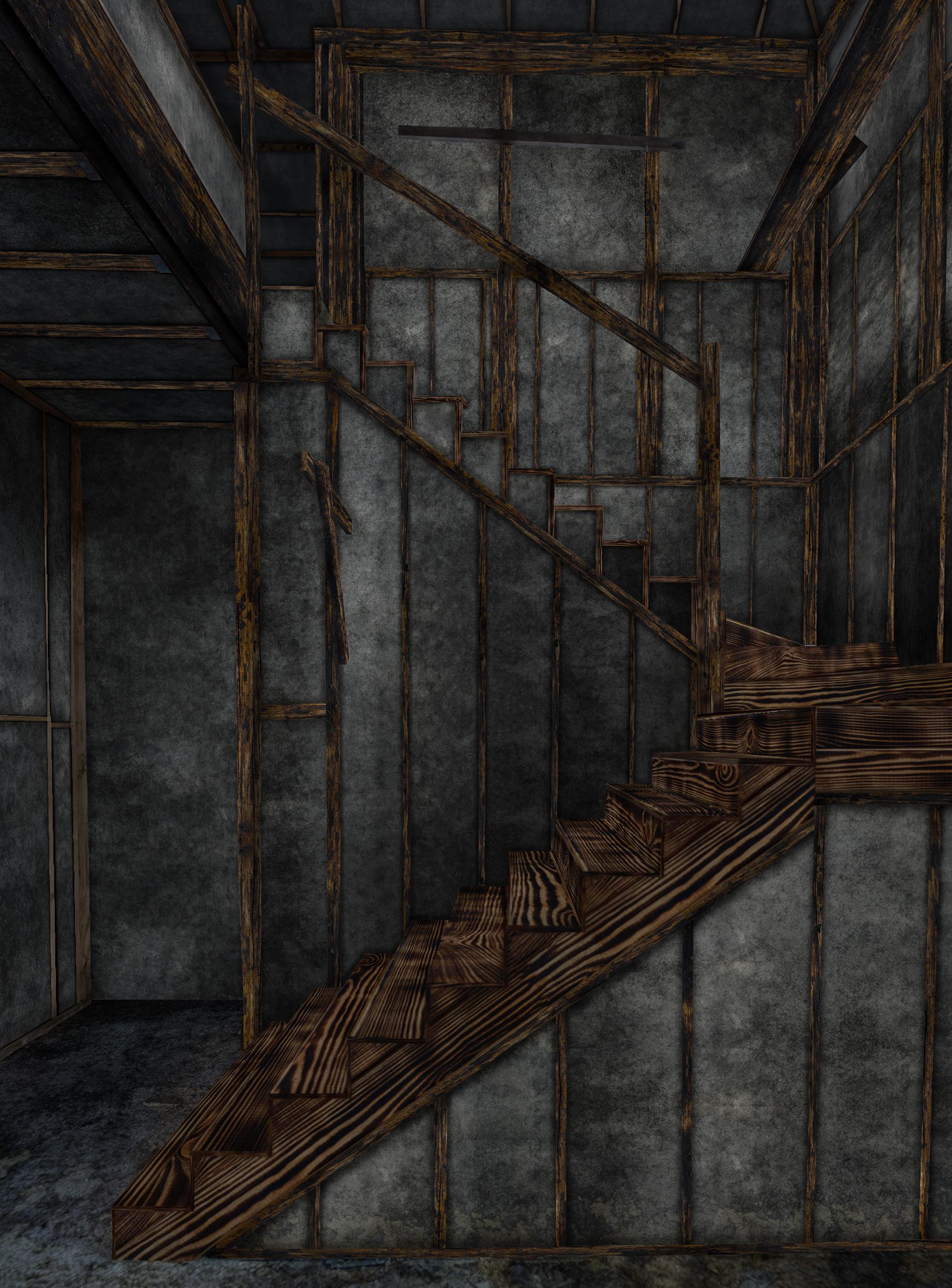
09 CONCLUSION
During the semester I was able to experiment with different materials. I saw how these transformed and how these affected surfaces attached to them. These transformations can happen due to physical or chemical reactions. No mater what, decay is bound to happen in our environment, whether naturally or by human intervention.
I focused on the processes of transformation and deterioration that can occur in our natural and designed environments. The use of conventional materials, along with familiar and unfamiliar forms, have allowed me to explore themes such as decay and erosion, architecture, time, weathering, memory, and the relationship between the individual and their surroundings. Through these themes, I have been able to consider the mutability and impermanence of objects and the impact that materials have on our surroundings after a period of time.
Moving forward, I want to continue exploring how spaces can transform. As a result, rather than letting these spaces be forgotten, I instead envision atmospheres that push the limits of how materials decay, allowing for people to engage with them.

 Thesis Advisors: Jean-François Bédard, Britt Eversole, Julie Larsen Syracuse University School of Architecture Fall 2022
Thesis Advisors: Jean-François Bédard, Britt Eversole, Julie Larsen Syracuse University School of Architecture Fall 2022